SOLSTICE 2023
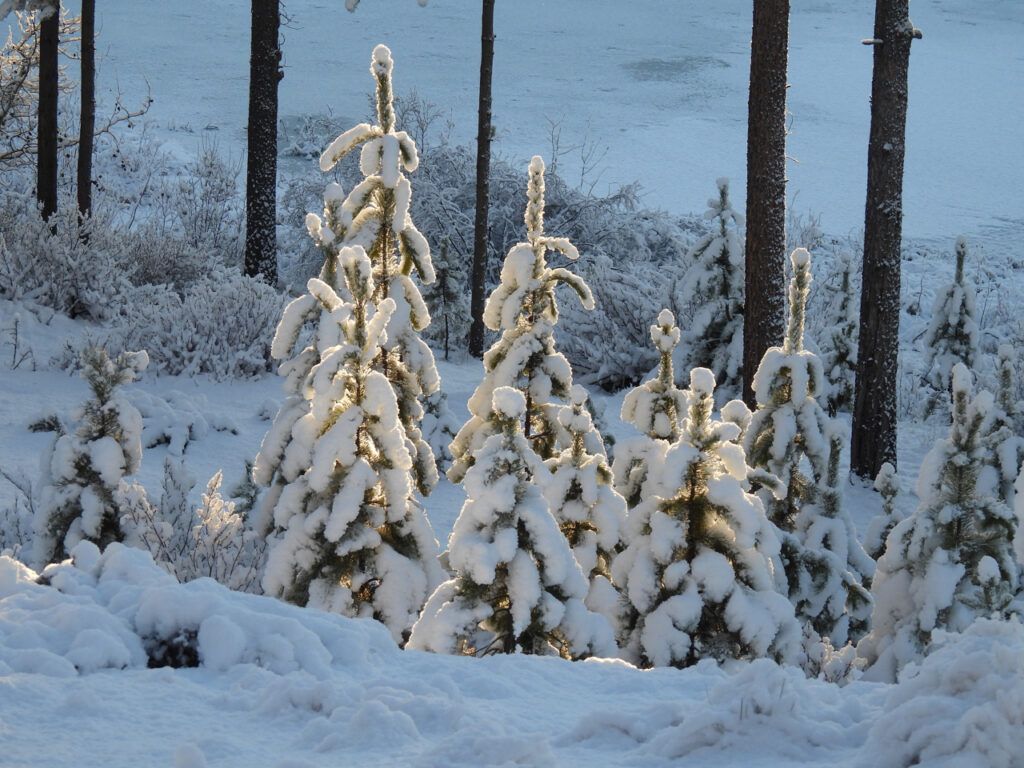
In this year of intense drought, heat, and fires throughout Canada, and especially in BC, our area remained a remarkable island of relatively cool calm. We got smoke of course, and our highway was cut off in the west by a dramatic fire on the Bella Coola Hill, and almost cut off twice between Kleena Kleena and Williams Lake, although they managed to keep traffic flowing in that direction. Our biggest smoke event was right at the end of the season – or would have been the end of the season in the past – when a fire south of Tatla Lake took off. I determined with the NASA fire map where the smoke was coming from. Like most fires, it had started weeks before, high in the mountains, and had been ignored. The summer had been largely windless, which was unusual. But suddenly a strong south wind blew up, and the fire with it. The smoke was very thick and at night it was possible to see the flames reflected in the sky. And yet this fire was 60km away. This photo was taken en route to Tatla Lake in the middle of the afternoon, 40 km north of the fire.
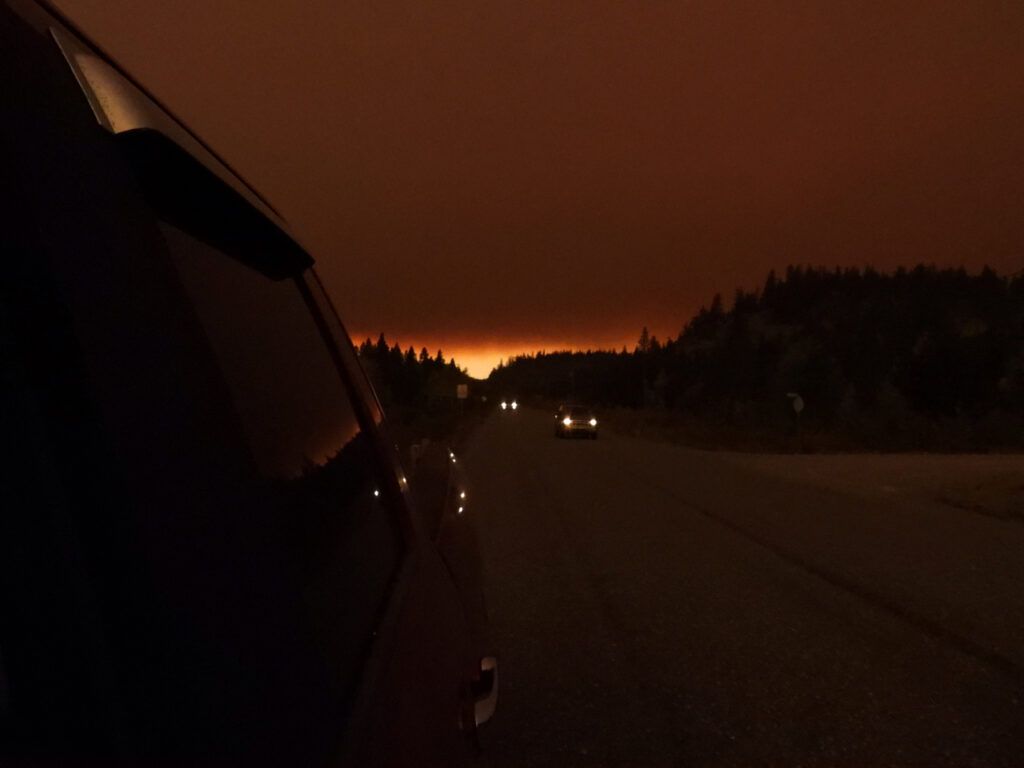
Only one habited property – a ranch – was nearby. Locals and forestry rushed down there to do what they could. The cows were driven, on foot, to a haven in Tatla Lake. The fire galloped up the valley; NASA showed that it had engulfed the ranch and was now threatening other properties. NASA registers heat, not flames, and I later learned that the house and a machine shed had been saved. Not so lucky was the bulk of the winter’s hay supply. In this drought year, bought hay was both expensive and scarce. I’m not sure how things worked out for them in the end, but our spread-out community, in an area 100km times 100km, comprising only 300 souls, is very supportive.
For some years, we had a locally-provided internet service. It was good quality and a reasonable price. This spring, the owners renounced they were retiring and would shut down the system in July. However, without much warning, they suddenly brought the day forward a couple of months, which left the neighbourhood scrambling to find another system. I didn’t want to go back to Xplornet, which was slow, limited unless you paid big bucks, and a real pain to deal with over the phone. The alternative was Elon Musk’s Starlink. It was more expensive, but easy to set up oneself – unless you were like me and ruined the first cable getting it through the wall and had to buy another. But it has since been mostly trouble free. So I now have a small, white square dish added to my view.
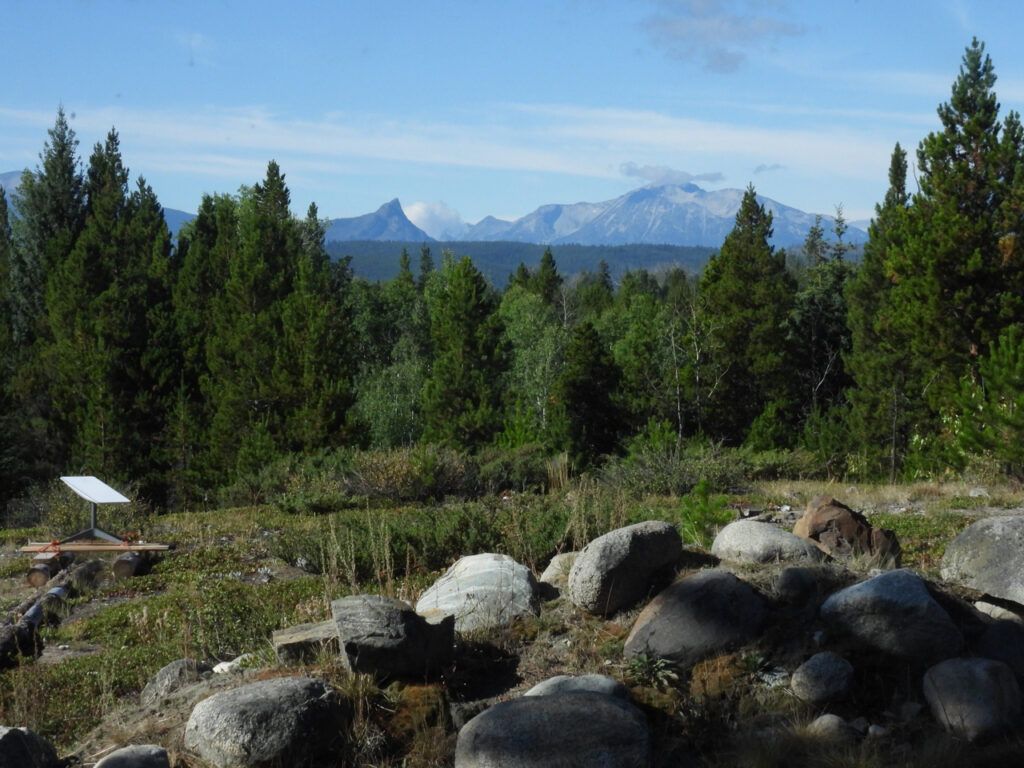
During the summer, when thunderstorms threatened, I disconnected everything overnight. If cloud was thick, it sometimes took hours to find a signal again. So during what has turned out to be a very gloomy December, I have been keeping it hooked up and this means it is using power: it also uses power to warm the dish to keep it snow and frost-free. Which means I have had to run the generator more often to keep my batteries charged.
Starlink wasn’t the only expenditure, however. With the previous system I could plug in an ordinary telephone. The Starlink router didn’t have the right hookup. A limited cell phone service is coming to the Chilcotin, but it is not activated yet. I would need a phone that would handle wifi calling. After a lot of misinformation in Williams Lake I was directed to Walmart, a store I have never patronized. After 2 sessions, which totalled 7 and 1/2 hours, I came away with a Galaxy phone that did not work. Wifi calling worked fine in town – where there was cell phone access. But not out here. I will, needless to say, never go into Walmart again. Finally I bought an iPhone on line. I use it for making only occasional calls, and it is another monthly charge out of my pension, but at least it works and it beats having to drive over to the neighbour’s.
I haven’t written a book since Captured By Fire, published 2019. I have spend subsequent winters painting instead. My last book tour took place just before Covid hit. So it was an unexpected bonus to have a book published this fall. Especially as I wrote it 40 years ago!
It was conceived during my second year at Lonesome Lake. I was still living in a tent and my friends Katie and Dennis, their 4-year-old son Birch, and Katie’s mum, hiked and boated in to visit. As a thank you for their support (giving me a place to stay when I came out of the bush, and so on) I wrote and drew: Birch Goes Hiking.
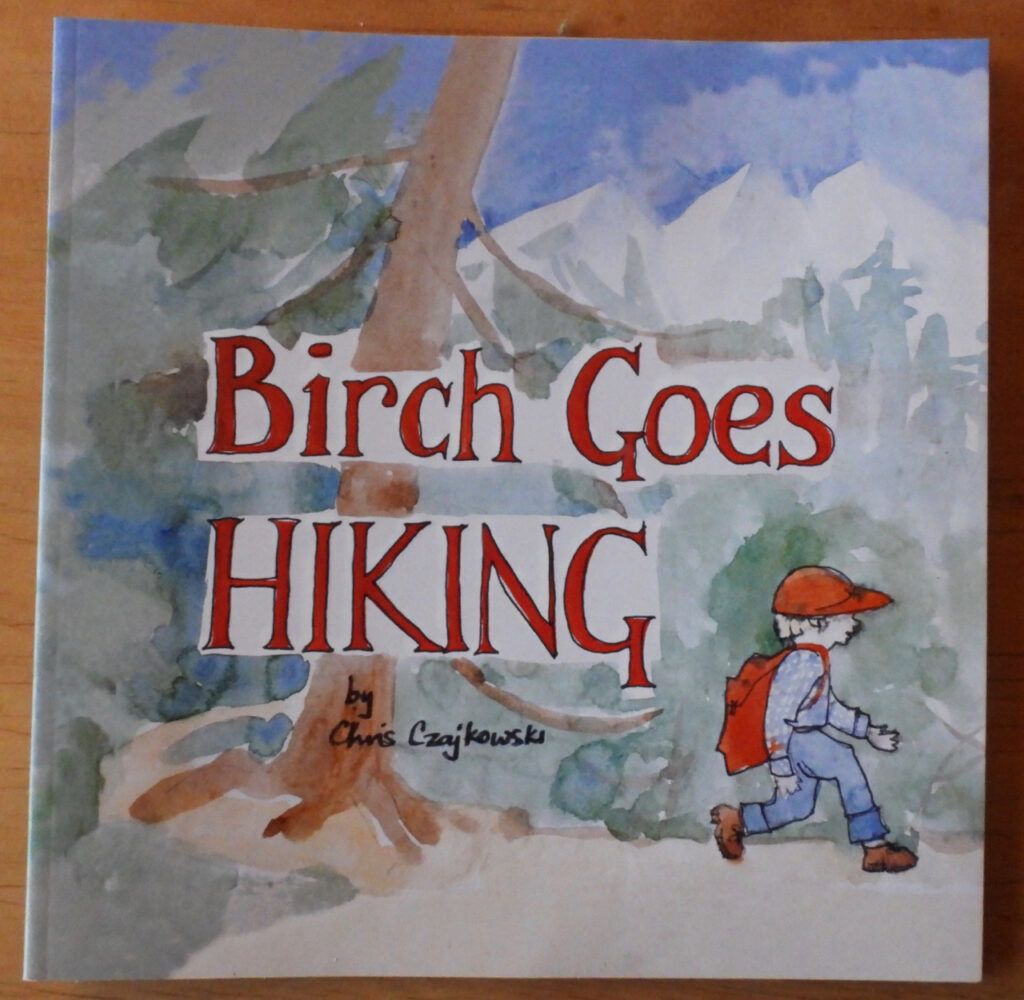
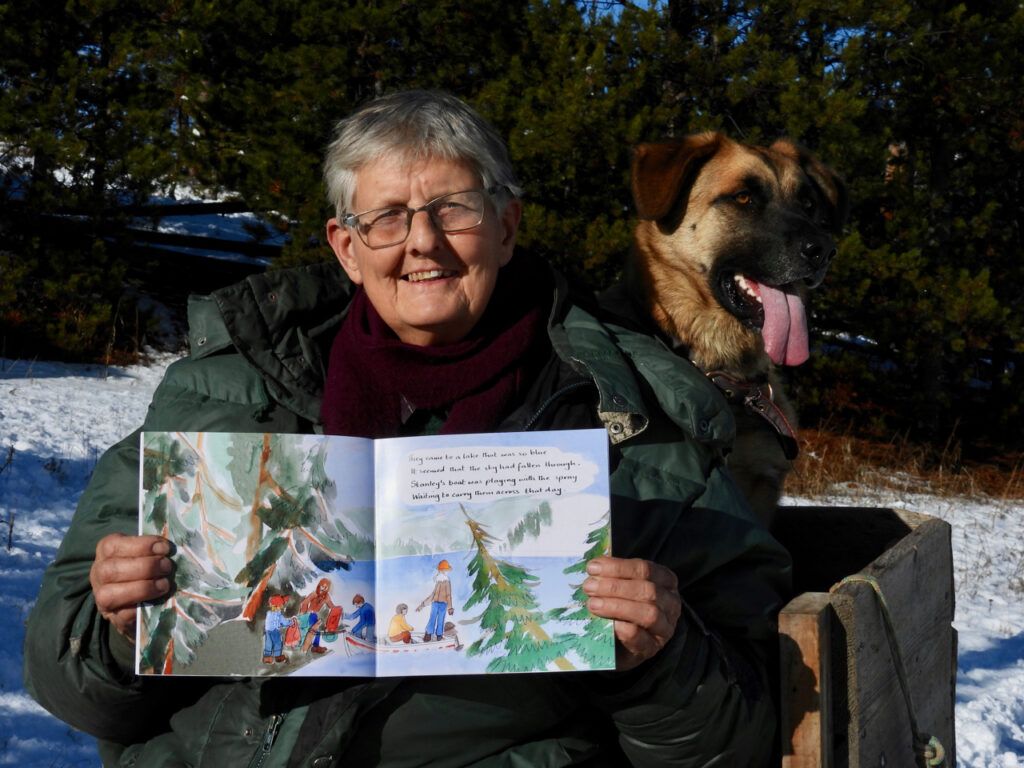
It is written in rhyme and starts: “Once upon a time, When Birch was four, He went to visit Chris, Who lives next door…”. Katie had a Mexican friend, now living in Chile, who had written and published delightful children’s books of her own. She was more than happy to do the computer work; Katie was more than happy to fork out the bucks – and so my 14th book was born.
So far it has been the warmest winter on record. It is barely freezing at night. You might think this a good thing, but it’s horrible. It is unremittingly gloomy. There is very little snow (The first picture was the only measurable snowfall, and half of that melted) and the ground underneath is so dry it isn’t frozen. I have been “fire-smarting”, ie burning brush under trees to reduce fire risk. Normally, rotten roots and logs would be frozen into the ground and hard to shift. But this year, they could be lifted out of the ground with ease. If we get no snow, or rain in the spring, we will have a truly worrisome summer.
Don’t forget to check out my blog for all the pretty pictures of my adventures. www.wildernessdweller.ca. All that remains is to wish you all the best for the coming year.
Chris
SOLSTICE 2022
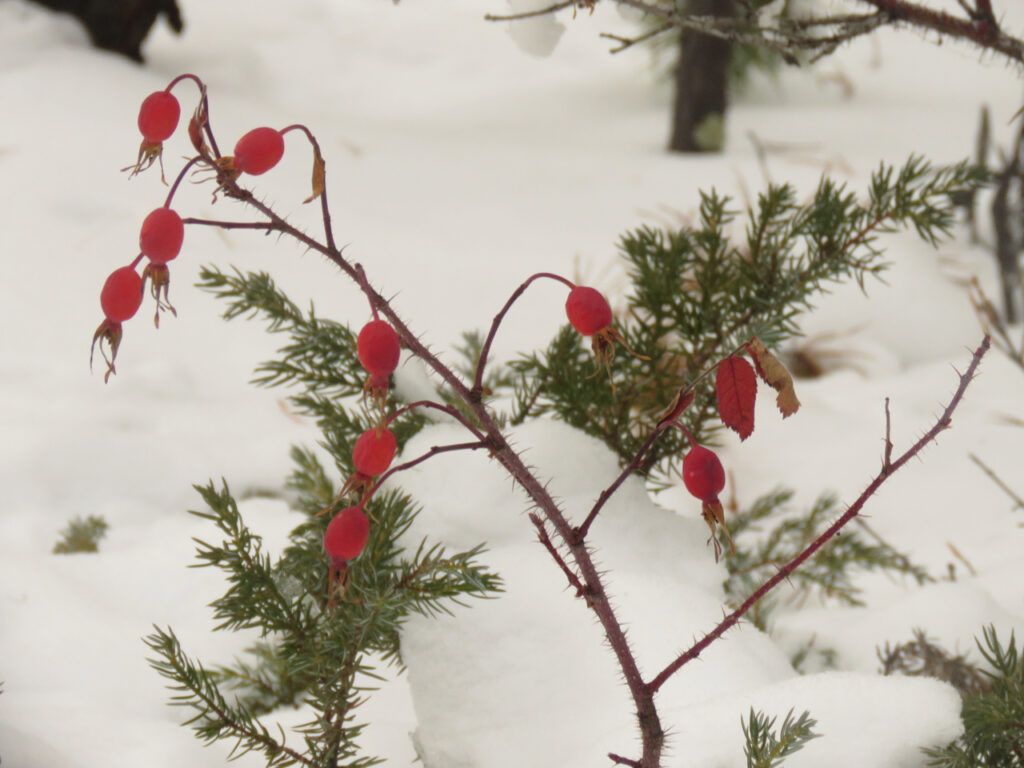
The big news of the year is: NO FIRES!
Which means, there isn’t much to write about!
Our cold spell (down to -43C) and slightly heavier than usual snowfall last winter meant I was snowed in for about ten days at the beginning of the new year, but then the neighbouring rancher came with his cat and shoved the icy snowbanks back far enough so that driving was possible. Then, as it often does in January, it thawed. And thawed and thawed and thawed. The sun blasted on the naked road through the burn and turned the surface to a sheet of glare ice. The chains I had would not fit my new(er) truck so I crept out to the highway one morning (only getting into the snowbank and having to dig myself out once) and used the ATV to go back and forth. Some trips were made on pretty chilly dark mornings, which was fun.
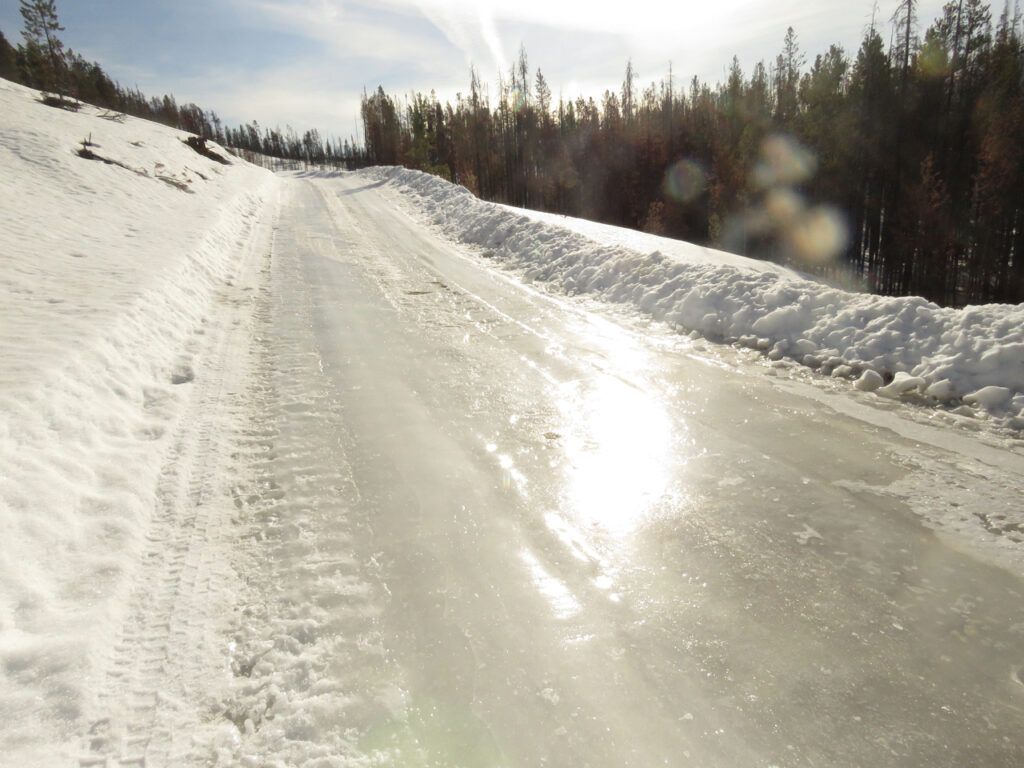
It never really got cold again and it was amazing how rapidly the snow disappeared. Early spring was dry and windy with a couple of grass fires, and we all feared the worst, but then it started to rain – and rain and rain. It often downpoured. We had some horrendous thunderstorms with lightning smashing to the ground all around, but it fortunately dumped rain at the same time. One notable storm started about 11 in the morning. I heard rumbles and saw a black cloud in the north (although it was calm and sunny at home.) Next thing I heard a roar. Wind? No – too regular. Fire – it roars like that. I jumped on the ATV and drove along the road. The burn starts half way to the highway. And the burn, still black with no spring growth on it, was covered in hailstones as big as blackberries. No hailstones in the green forest. The extra heat created by the black open soil must have created the thermal that started the storm. The roar was the hail – heard from 2 km away and still going on further north over the fire area. Then the storm expanded and we got another huge lightning crash and thunder smash for about 5 more hours.
The main delight in summer, for me, is alpine flowers. My attempts to get into the alpine were thwarted, though, by a major washout on the access forestry road. It was not repaired until nearly the end of September. Luckily, the fall colours were late up there this year and I was able to catch them at their best.
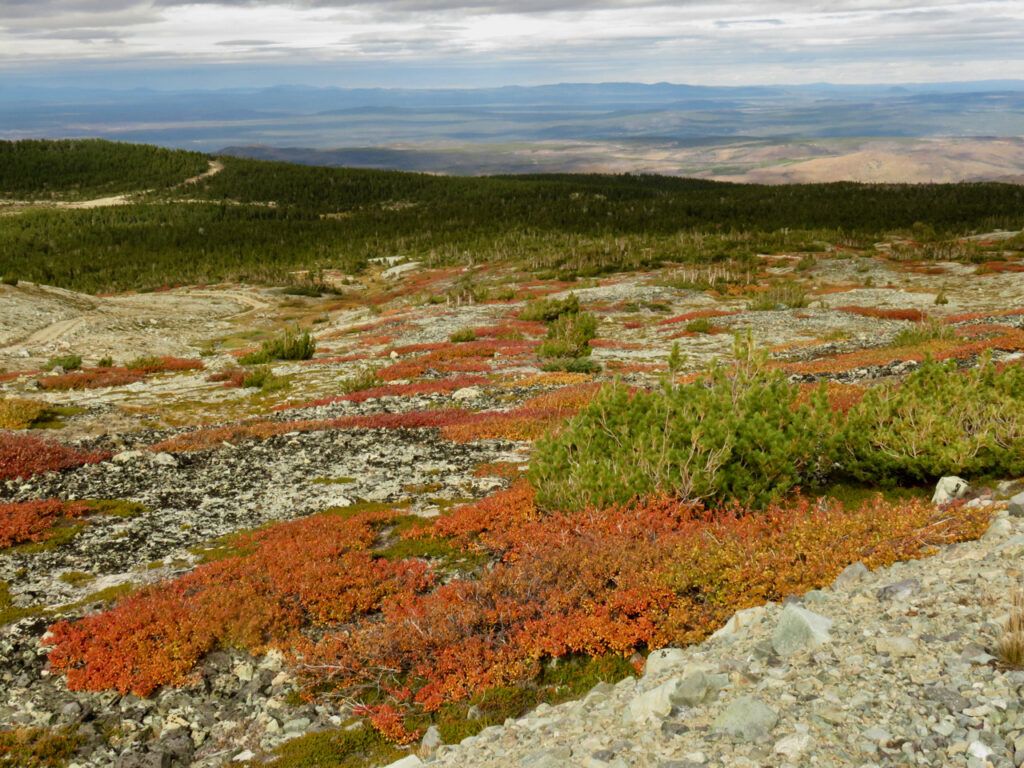
We had a fantastic “Indian summer” (is it still politically correct to say that?) which made up for our crappy previous weather. But cold started early – at the beginning of November. We had several nights -30C or lower. After that, temperatures have rollercoasted up and down – as I write it is 40 below. (For any Americans reading this, the temperature is the same in both languages). So far we have little snow – maybe 12 cms (ankle deep.) But it is supposed to warm up by Christmas and that usually means snow. I just hope it doesn’t warm up enough to rain.
How these little guys do it I don’t know. Note the frost on his head, even the eyelashes.
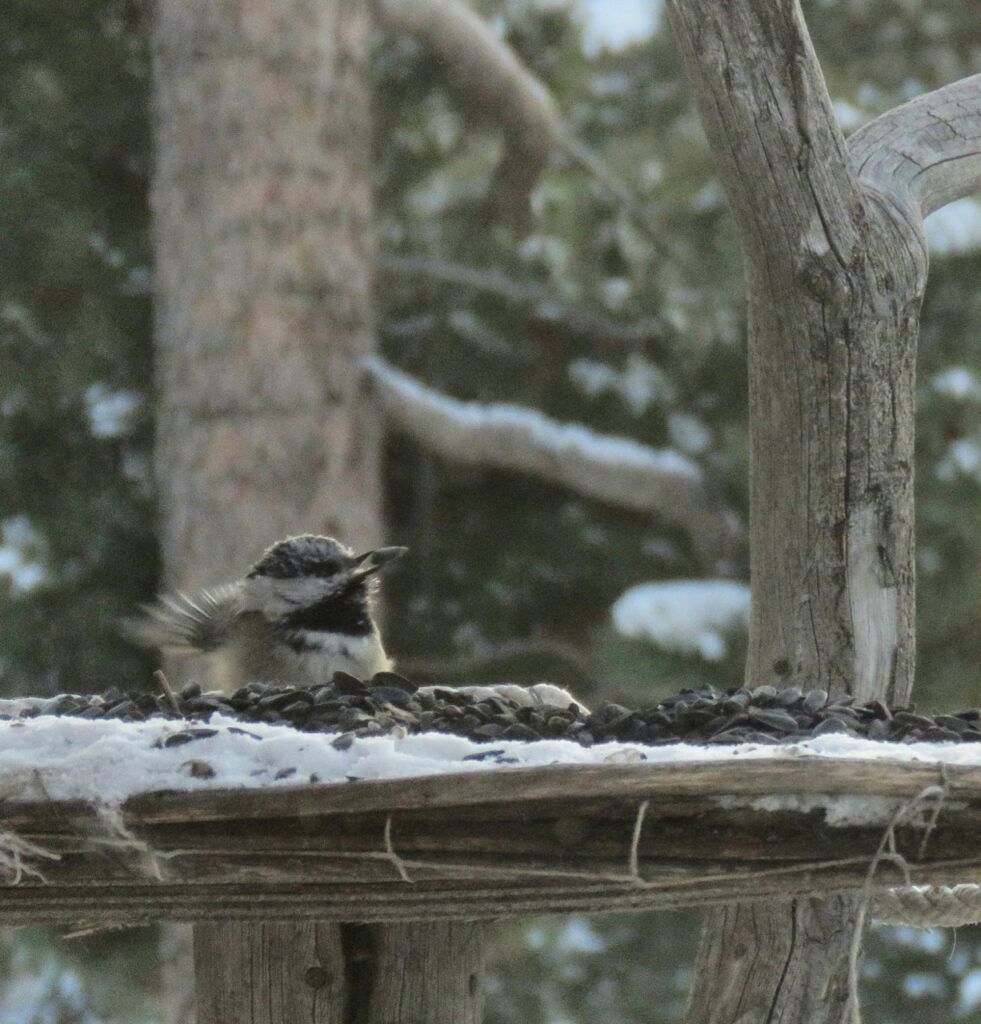
I have of course been following the situation in Ukraine. About 3 years ago I came across The Color Music Children’s choir singing Walking the Wire. I wonder where these children are now?
SOLSTICE 2021
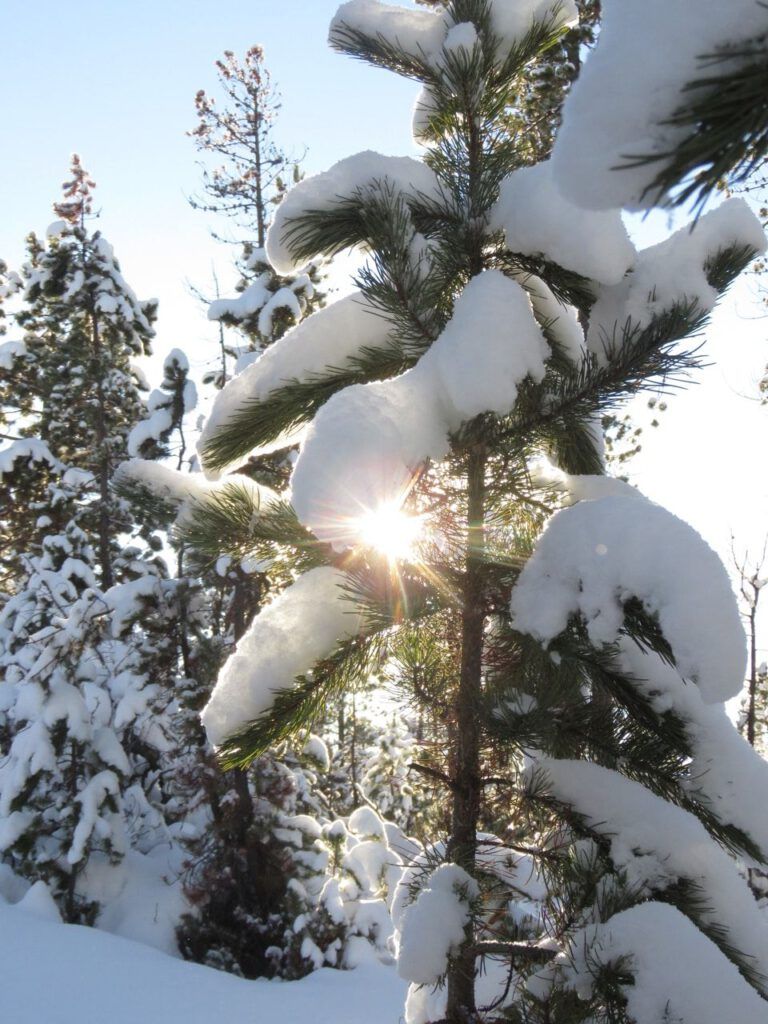
A year of extremes. We had a relatively mild winter for the most part, but in late January we had a cold spell that beat many temperature records – here it got down to -43C; further east, at the weather station, it reached -48C. (That’s -55 American.) (I did experience -50C twice at Nuk Tessli.). The cold stretched south to Texas and their inadequate power systems could not keep up with demand. Thousands huddled in unheated homes with no light, means of cooking food (or TV, or ability to charge phones, poor things) watching their plumbing freeze. People died.
Next thing, in June, we had a heat dome. Similar temperatures, but plus – ie 43C here and 48 near the weather station. The record was in south central BC at Lytton, where all Canadian records were broken at +49.5 C. I sure know which temperature I’d rather deal with. Cold can be uncomfortable, but it’s always possible to wear more clothes and throw more wood on the fire (unless your house is all-ecetric – ugh!) but in the heat, with no air conditioning, the only way to keep cool is to go to a lake or river, all of which are cold round here. City people were not so lucky. In BC, 60 people died, mostly those who were elderly or not mobile.
And the inevitable by-product of the heat was Fire. The first near here was in late May, right in the middle of the area where the 2017 fire stared. I could see the smoke rising over the exact same ridge. It had been started by a rancher’s careless burning of brushpiles. Naturally I went to have a look. We could stand safely by the road and get a great air show of tankers dropping red retardant. A ground crew arrived near sundown and worked all night on it. It was totally put out.
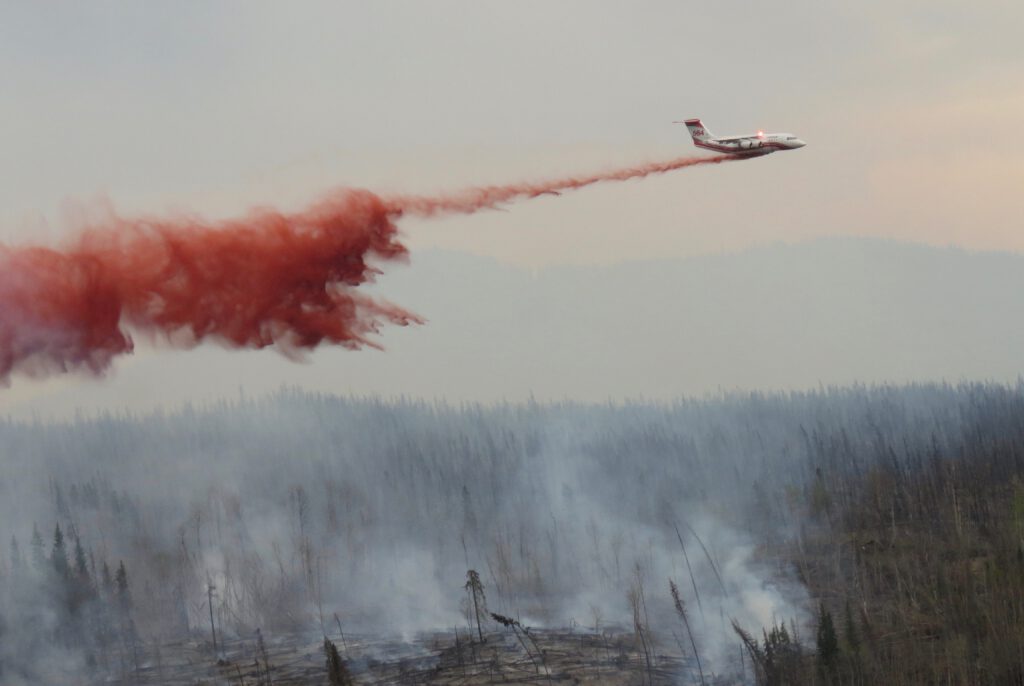
In June, another plume of smoke became visible from my house, this one a little further north. It was floating up from a logged area and was suspected to be people-started as there was easy access along the logging roads. Probably not deliberate, but a careless cigarette, camp fire, or sparking chainsaw can easily take off. It puffed up for a few days, then we got another fantastic aerial show. Not only tankers, but an aircraft I had never seen before. A bit like a large Beaver float plane with a single engine up front. They are known as air tractors and can skim water while flying from a lake and fly at great speeds to the fire. There were 5 in a row screaming low over my house. And the fire, it seemed, was out.
But right around that time, Lytton, so recently the high temperature record-breaker, burst into flames. The railway runs through this small town, and accusations were made that train sparks flew into the dry rail-side grass (but the railway company eventually denied this.) Whatever, the town was almost instantly consumed, and two people died because a power line fell on their hiding place. There are few forest fire deaths in Canada, unlike in the States which has a much poorer evacuation infrastructure.
Other towns started to be threatened by a surge of fires in south central BC – and when my local fire suddenly popped up again, after three weeks’ dormancy, all the aircraft and crack teams were occupied. In 2017 I was under evacuation order for most of 2 months, but I stayed home a lot of the time as the fire was moving away and my 4 km of driveway would take me even further away if I had to leave. This fire was of much more concern. It was a lot smaller, but in the west, and that’s where the strongest winds come from. It was across the highway, but travelling straight towards it, right to the point where my driveway joined it. If it crossed the highway, it would burn my escape route. Properties on the far side of the highway were already under evacuation order, but I was not even put on alert. (BC Wildfire website is notoriously lacking in information.) However, anyone with local knowledge and access to weather and Google Fire mapping websites could see the danger. I spent a frantic, hot, smokey 2 days watching the websites, packing, and doing what I could to fire-proof the place. Things like stapling tarps over the woodshed so sparks would not blow through the cracks in the wall. To compound matters, the afternoon before I decided to leave I was presented with 60lbs strawberries, pre-ordered from the Precipice. I spent hours that evening and the following morning trimming them and getting them into the freezers. Close to sundown on the second day, I was ready to leave. Totally exhausted – should I wait until the following morning? (I had been offered a cabin with my friends down at Stuie near Bella Coola). I had to pack in case I had no home to come back to. A lot of food because I have sensitivities and cannot find anything to eat in most grocery stores. Plus tools that would be expensive to replace, like the chain saw and ATV. I decided to leave that night. I could see three other smoke columns during my 3 – hour drive west. One, the Hotnarko Fire, would periodically close Highway 20, but although it looked very dramatic as I drove by, I was able to get past.
The following day Google Earth Fire mapping showed that our fire had indeed crossed the highway and swallowed up a good part of my driveway. The day after that, locals were able to go in, and they told me that both Jade and my houses were OK, but more than half of the driveway had been burned.
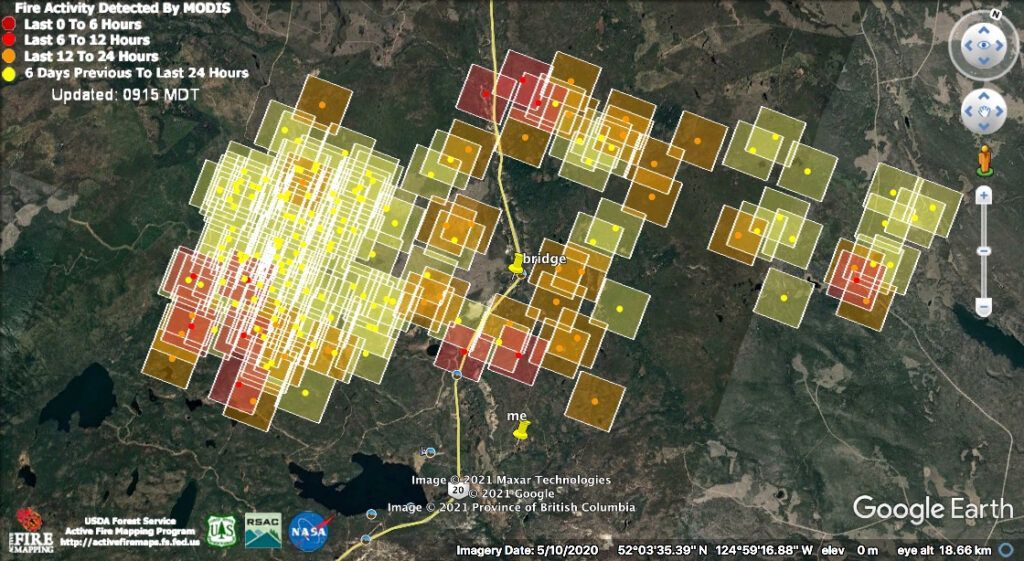
As all fires do, things calmed down for a few days and, checking on windfinder.com. that there would be no strong winds, and knowing that the mornings were usually calm, I drove up the Bella Coola Hill in a foggy pitch black and arrived at the fire as light started into the sky. There was a lot of smoke, and I was blown away at the starkly burned trees on either side of my driveway.
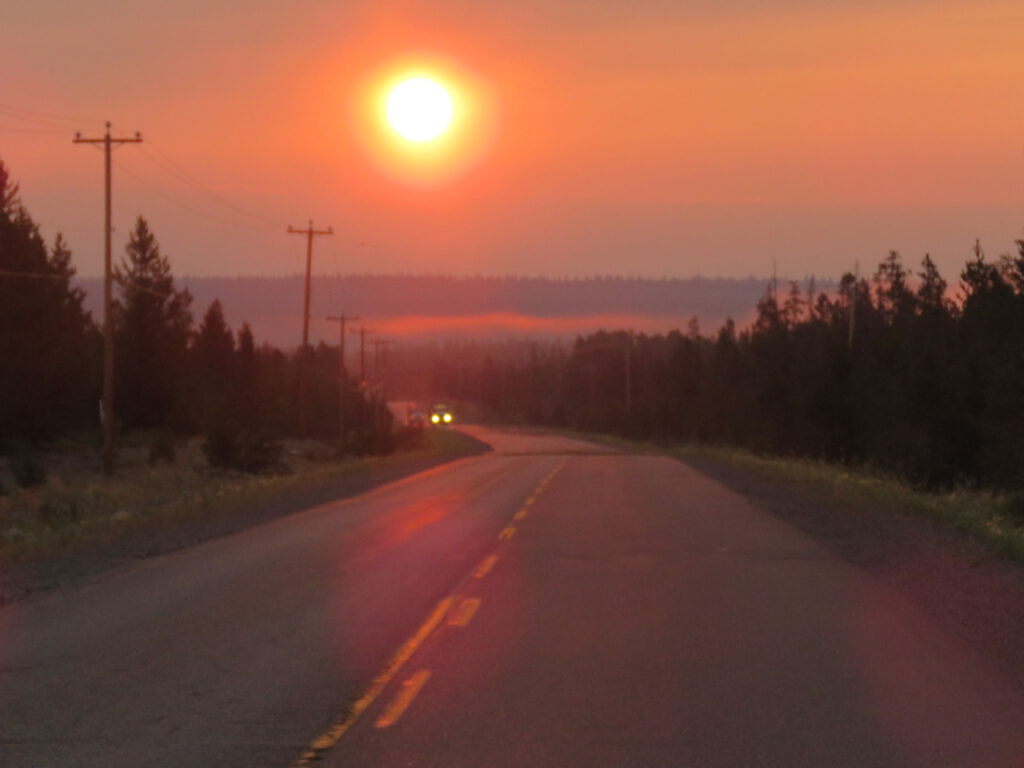
One of the reasons I had gone up was to water the garden. I pump water from the river into tanks and then pump that onto the garden. The veggies had been unattended for a week and I doubted they would have survived in all this heat. However, I arrived to find that the ground was sodden all around my house – every conceivable high point held a powerful sprinkler. They were pumping water from the pond below my house – the pond that the beavers had so kindly re-dammed a couple of years before. Not only was the house saturated – so was the garden! (This water was beaver-pond sludgy – not the kind of stuff one would want to eat on salads. But I was able to harvest a big pile of greens for cooking.)
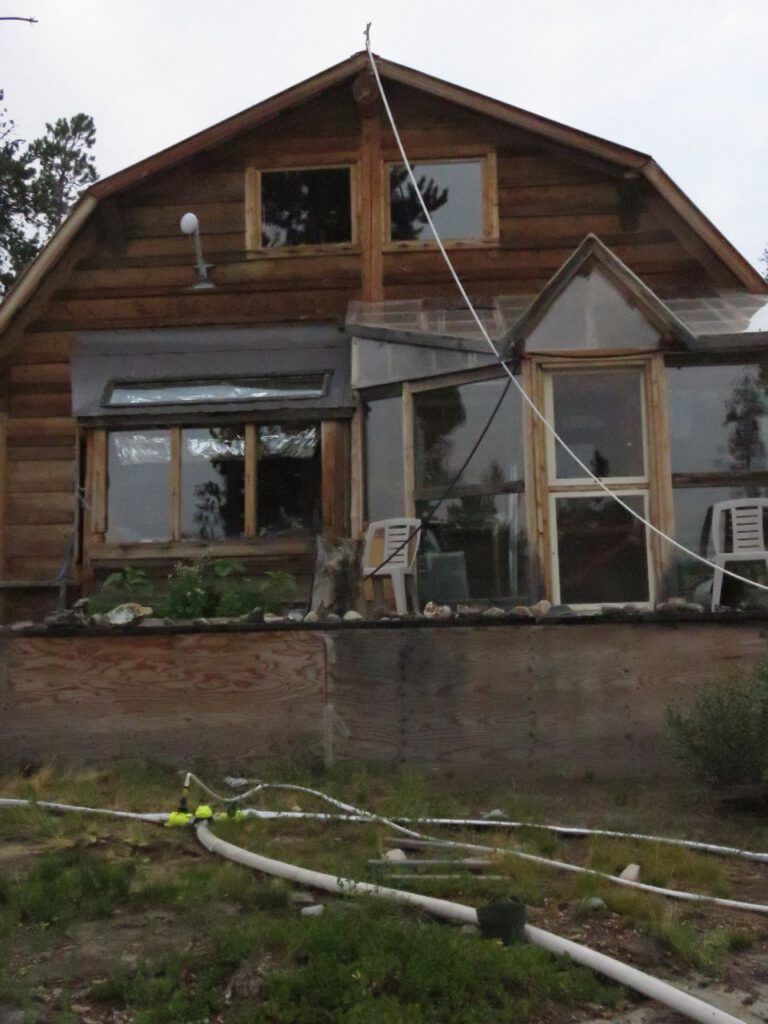
The fire was too close and dangerous for me to stay, though. By watching the websites, I managed to get home about once a week. On my next trip, my road had another enormous surprise. All the trees had been cut back to leave the road naked. This was to stop the burned trees falling onto the road and hindering firefighters. (I was not, of course, supposed to be there.)
After three weeks, it looked as though the fire was calm. I decided to take everything home with me this time and hope it would be safe to stay. But on August 3rd, there was a big flare-up. A freak north wind drove the fire back towards my place. I heard later that the firefighters had been extremely worried and had worked on it all night. I had left a trail camera on my driveway and recorded vehicles rushing in to my place at 1.30:am.
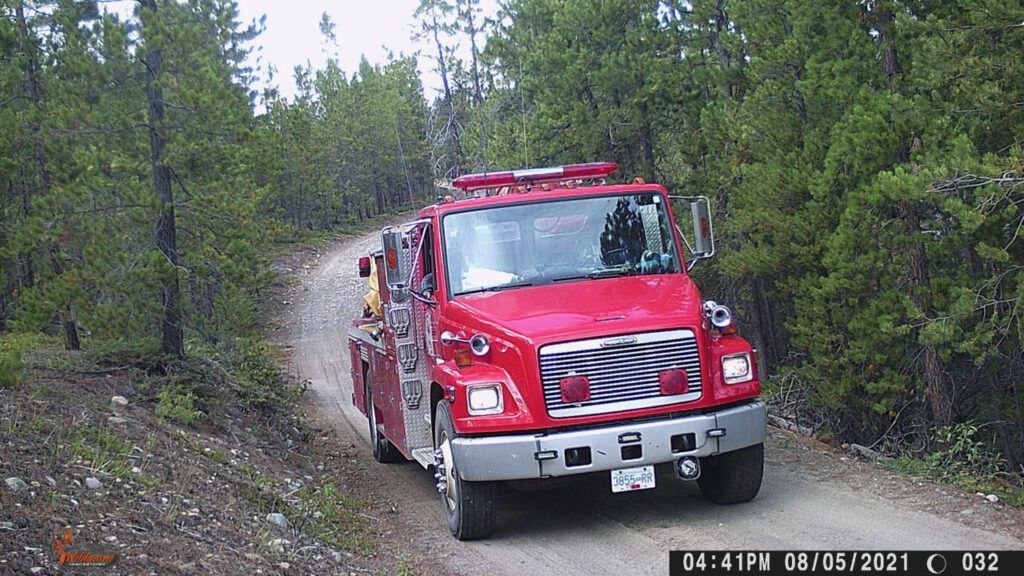
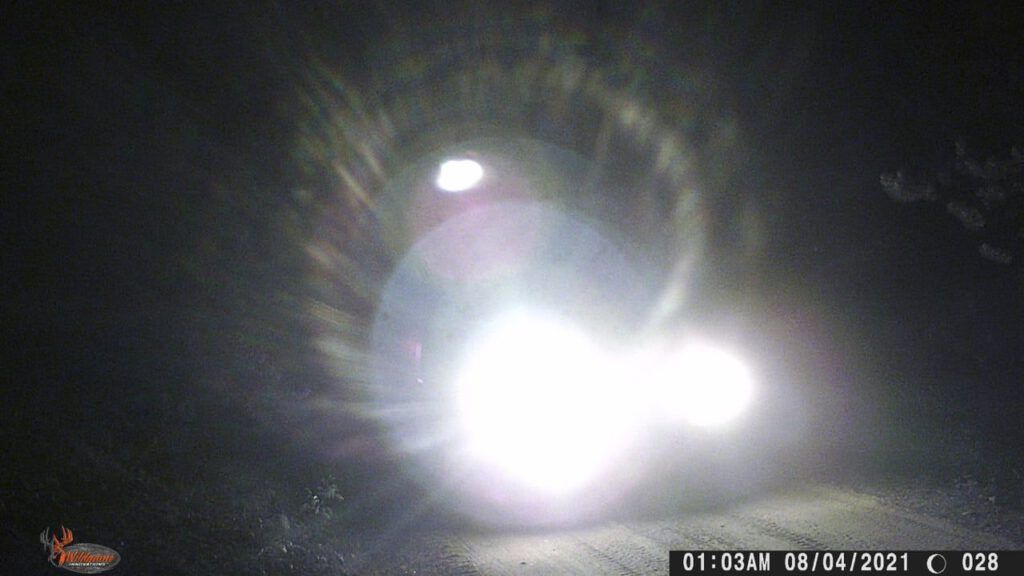
I ended up staying in the Bella Coola Valley for 5 weeks. They were lucky this time – they had very little smoke even, as all the fires were further east. It was hot but we had the Atnarko river to drift-boat and swim in. I also had access to a plethora of berries – plums, blackberries, blueberries and raspberries. So I took advantage and got a good supply for the winter.
And so I was finally able to go home. This is the fourth time that I have had to live with this angst, and definitely the narrowest escape. But I still had my house and garden – so did my neighbour. Only one person in our area lost his cabin. Friends have helped him get established again, and he is all set for the winter.
The fire effects were not finished yet, however. My driveway used to be the old highway 20. But it was decommissioned, and all these years the residents have had to maintain it – ploughing, falling trees, filling potholes. I tried complaining – after all 3 families now lived along it. It turned out that 3/4 of the road belonged to forestry. Because of fire damage, and because there happened to be some money in the budget, they were going to give the road a makeover. During the fire the road had been graded and, because there were now no trees alongside, it was at first difficult to figure out where the trouble spots had been. But I finally sorted it out and was able to point the problems out to the forestry guy. He also said that, as the roadside cover had been removed, slippage was bound to happen. So a massive programme of ditching, putting in culverts, and moving gravel around was initiated. The aesthetic mess that this created was far worse than that made by the fire (where, by the way, already new green plants were poking through. It is going to be very interesting for me to see how the landscape regenerates.)
Metamorphosis of a Road (from my blog)
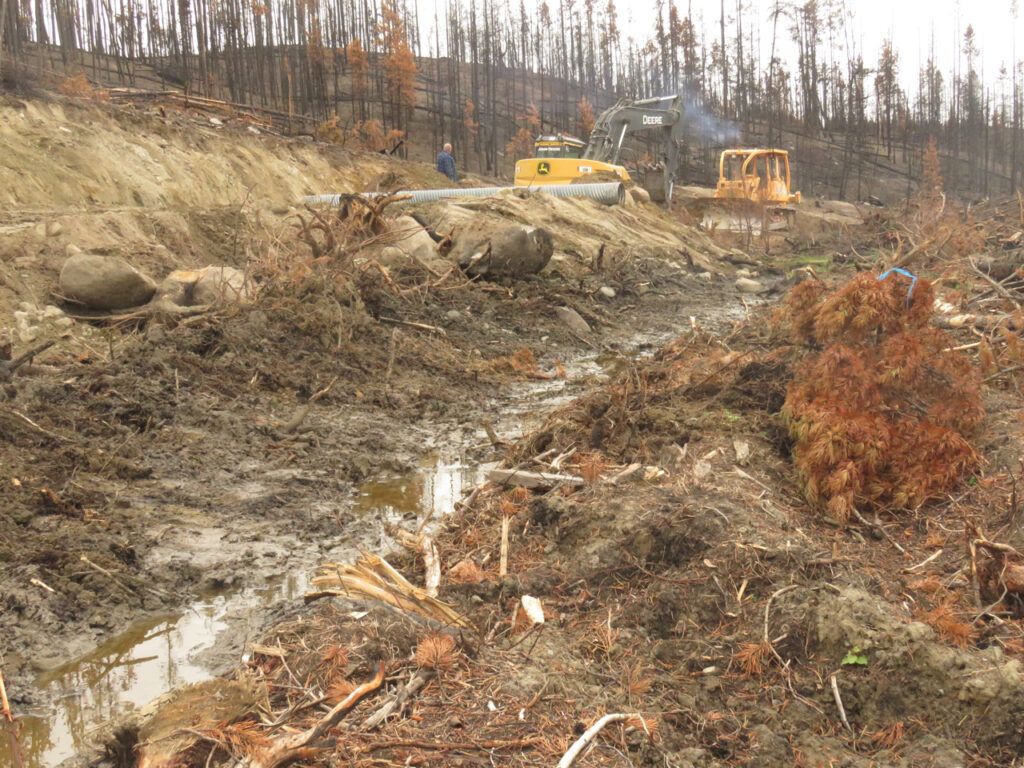
Readers of Captured By Fire may remember that, asI left Williams Lake the day all the 2017 fires started, I was guided round one that blocked the highway by a forestry person. It so turned out that the engineer in charge of restructuring my highway was the same man. So I finally had a chance to thank him!
Another spin-off from the fire was a new dog. My last old dog, Harry, had to be put down in June. Life would be so much easier without a dog – and indeed, when I had to evacuate, this was the case. But in the Bella Coola Valley I met a lovely, young but gentle dog who was very pregnant; a few days later in early August, she had 7 puppies. Most were white and fluffy, but I’d had so many problems with dog coats over the years, that I wanted a smooth-haired one. Pepita is very like her mother. I brought her home at 8 weeks’ old – she is now 4 months. I really missed not having a dog and, despite the extra work, I am really enjoying this one. She’s gentle and quiet – but wants to play non-stop. I’m doing a lot of snowshoeing to keep her occupied.
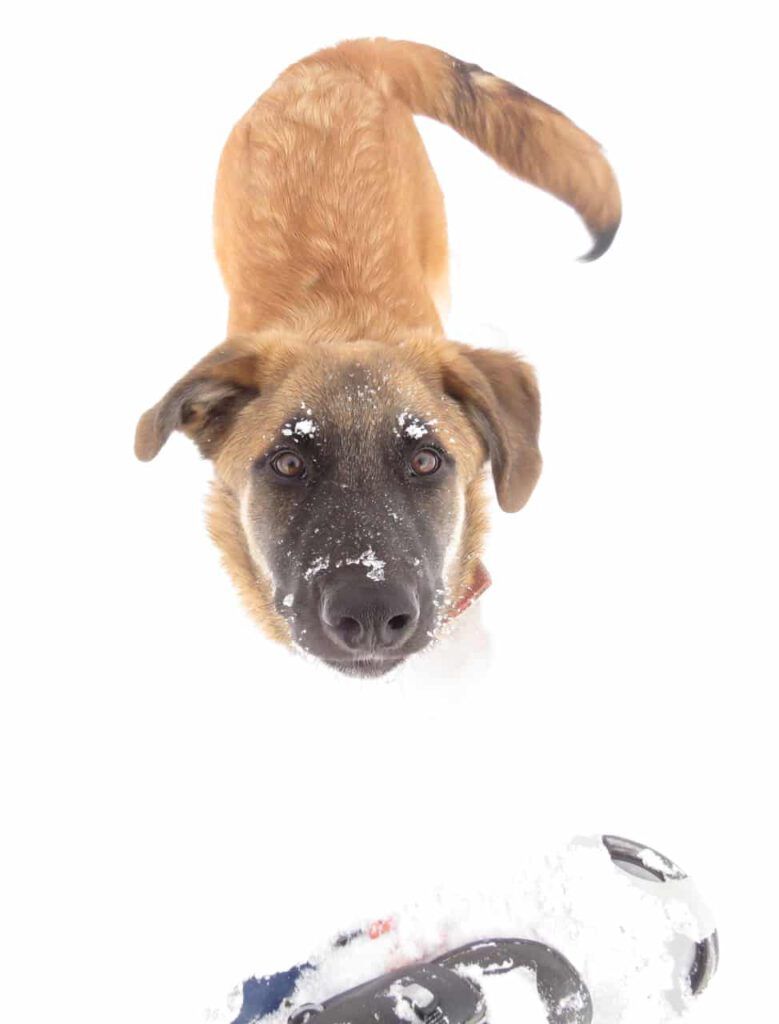
SOLSTICE 2020
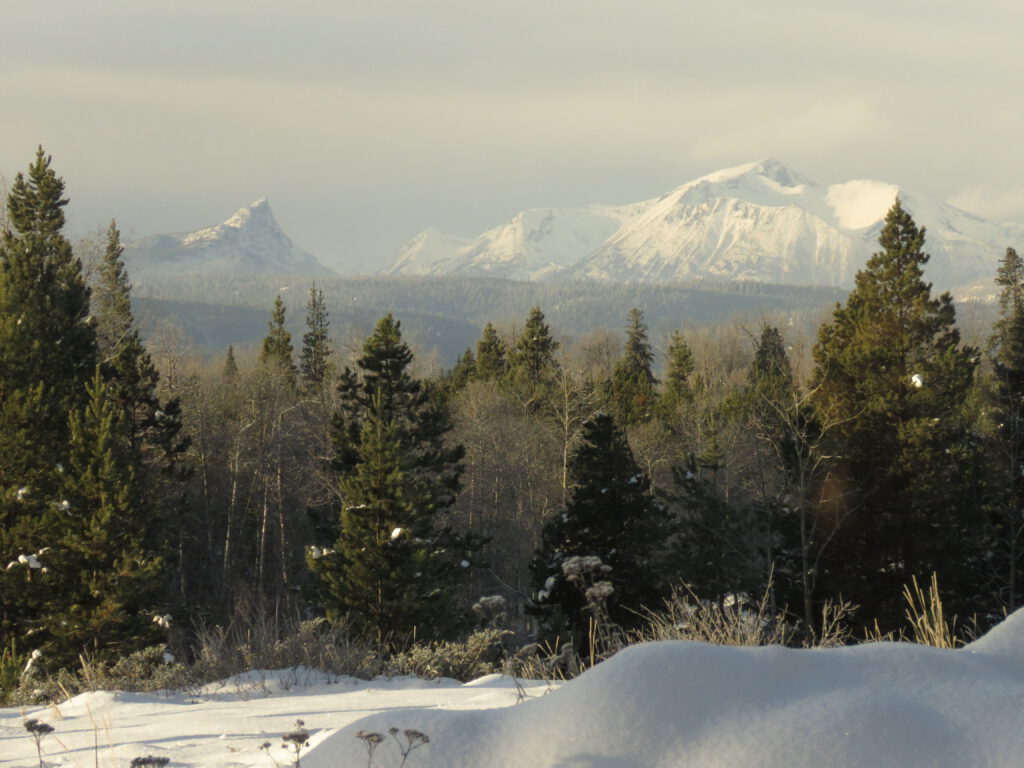
Most city folk would normally consider life in a “remote” area to be hard and unrewarding. But in this covid year we who live out here have had a huge advantage; very low risk of exposure, lots of space to move around in without restrictions, and all our usual tasks to keep us well occupied. We have had to forgo our gatherings – cattle drive party, gymkhana, rodeo, weekend-long Thanksgiving, and I don’t have any invites to Christmas dinner this year, but otherwise life has gone on much as usual. I cannot imagine how awful it must be for people who live in a cramped apartment and whose only life is outside those walls. Isolation is nothing new for me of course. I’ve spent many Christmases alone – even without a radio for many years; in any case, the internet makes a mockery of isolation.
In view of the covid news, I re-read Pepys diary. He lived through the 1665 plague of London, followed by the Great Fire. The diary was written in a code that was not cracked for 200 years! It is a most personal, amusing and interesting look at life of those times. The plague is just a part of the diary. Nobody knew about pathogenic organisms at that time; they had no idea that rats’ fleas were the carriers. Rich people got out of town. The majority stayed. Many who got the plague self-isolated, which meant locking themselves and their families in their houses. For them, it almost always meant a universal death sentence.
I decided, for the first time in decades, not to write last winter. Instead I painted. Sure I’ve done book illustrations, but not simply painted for its own sake. I had a ball, ending up with 4 that I liked, including two tryptiches, both of which I was able to sell! One was of the mountains near Nuk Tessli,
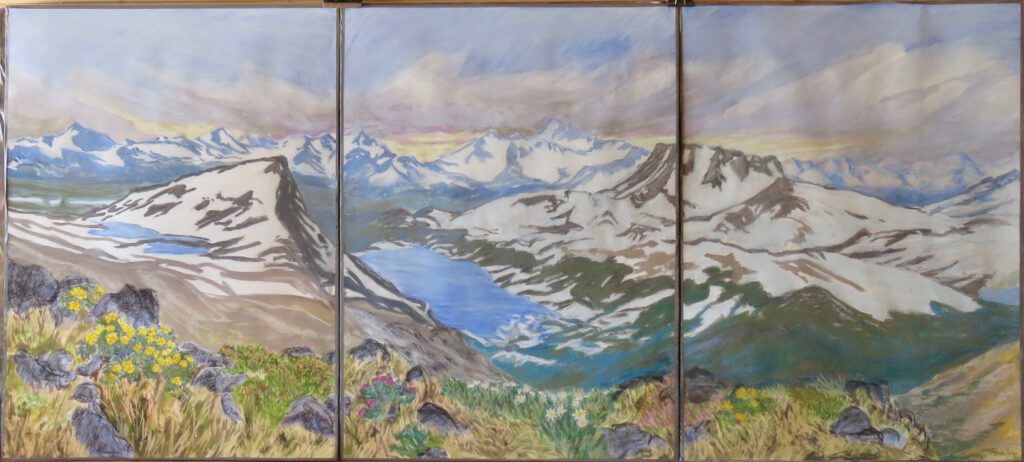
the other of the Bella Coola rainforest. (Gotta get those flowers in the foreground!)
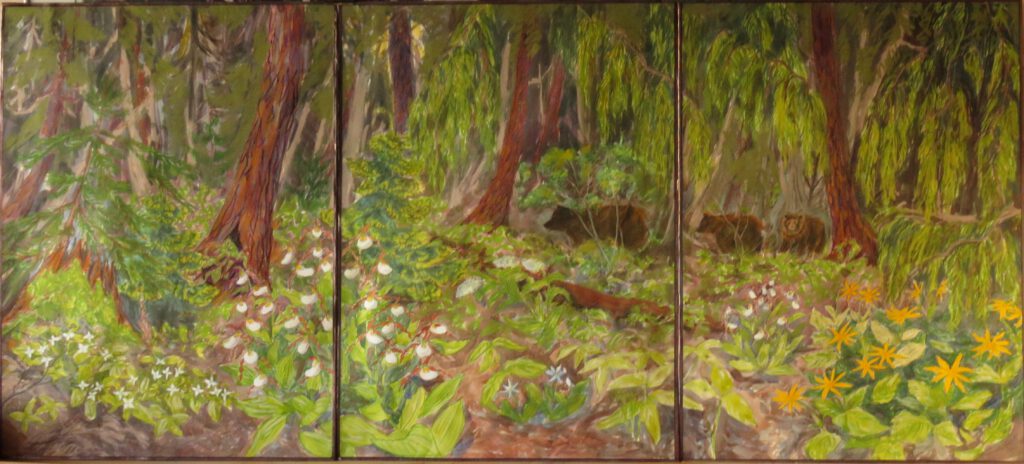
I had several volunteers throughout the year – all came to me because their plans had changed; either they were supposed to be working in tourist businesses or else they had planned foreign travel. The first eight were foreigners but had all wintered in Canada before the covid struck. They had their own vehicles, stayed in their own cabin, and did not come into my house for two weeks. At mealtimes, I rang a bell and, like Pavlov’s dogs, they came to the door, salivating, and bore their food away. They were all hard workers, and we made huge inroads to fire-smarting my property by clearing and piling brush and eventually burning it.
One unexpected glitch during the summer was that my well ran dry. It has never had a huge amount of water in it but it always kept going. And this during a wet year – the month of June was the wettest on record. In talking to people they said that this is not uncommon. When it rains a lot the water runs off instead of seeping into the ground. I knew this happened during breakup in April and May, but once the ground was thawed, why would it continue to do so?
So I had to look at alternative methods of acquiring water – water for household use was not too difficult to haul, but I needed more for the garden. Below the house is a swampy area that has been occupied by beavers these last two years – they have dammed the little creek and kept the pond full. But it is very unhealthy – and sludgy – water fit for people to drink would take a sophisticated filter system to make it safe. So although my powerful fire pump could deliver a ton of water quickly to the garden, I didn’t fancy eating raw greens bathed in it. The next best thing was to get water from the river. It still had a risk of pathogens but it was of otherwise very good quality. Trouble was, the river was 1/2 km away. So hauling garden water involved buying two 250-gall tanks that had once held soy lecethin – unbelievably sticky, goopy stuff to clean out; building a permanent stand for one, and using the other to ferry water from the river to the stationary one. I could carry only half a tank at once in my truck. Transferring water from river to tank and from one tank to another, then from tank to garden required pumps – at first my strong volunteers moved the heavy fire pump back and forth, but as soon as the covid-stressed companies and post office allowed, I bought two more lighter pumps, and consigned the heavy fire pump back to the pond.
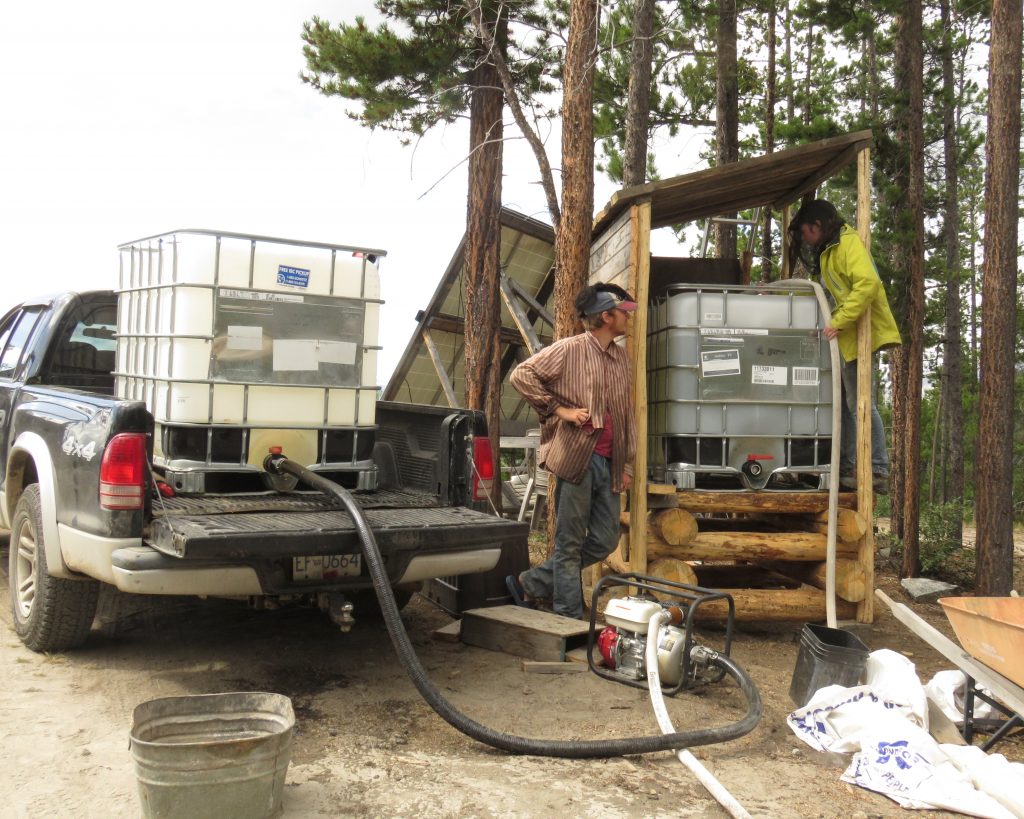
So the garden got watered, but in fact it did not need it very often as it was such a wet year. The second in a row. True, there was no fire worry (except for a week of intense smoke from the western States), but those of us who choose to live here did not sign up for a coastal climate. At the end of summer my well came back and I can use it for dishes, laundry etc. But I like the taste of the river water so much I am still getting that for drinking (properly filtered of course.)
In keeping with the weather trend, the year started with a slightly heavier snowfall than in recent years. It was a mild winter, except for 10 days that Environment Canada labelled “extreme cold”, where, on three days, temps dropped to -43C here and -48C not far away. I remember two separate times at Nuk Tessli, where it dropped to -50C, but this is not all that usual now. My neighbour was in Australia visiting relatives very close to all the terrible fires in New South Wales. She was experiencing plus 40C temps – she came home on our last cold day so that was quite the contrast!
Apart from the initial efforts to get the nuisance stuff out of the way, snow is so much more pleasant than rain. Clean, bright, dry, no ice, and fun to play in. And spectacular under a full moon. As a result of the wet, my 4 km road has deteriorated terribly – potholes and washouts and now an absolute mess of slick, icy ruts. Continuing with this litany of rain, it has been the mildest and gloomiest December I can remember. At least the ground is white, but the 30 cm of snow we had a couple of weeks ago has been pounded down to less than half by heavy rain to form a half-frozen icy sludge. It is not pretty, and it is no fun. The sun is so reluctant to show itself that I’m having to use the generator to charge the batteries for my solar power system every couple of days. I’m actually finding this awful weather much harder to deal with than the covid.
So please do not make the mistake of wishing me a warm winter! I want a cold one. With sunshine.
Here’s hoping for a happier 2021 – both virus- and weather-wise.
Stay safe
Chris
Winter Solstice Newsletter 2019
The year was, in a word, wet.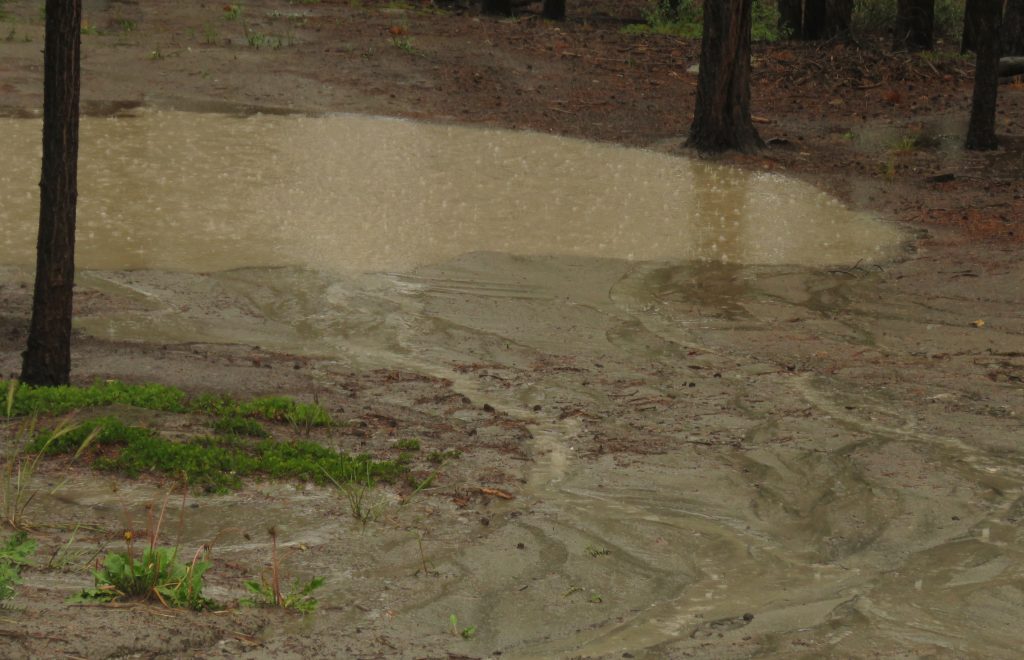 There has never been such a rainy, cool summer. Deluges happened. Vegetables rotted in the garden; washouts happened in the road and had to be filled; firewood spent a month in the woodshed before it was dry enough to burn properly; my root cellar in the basement never dried out so winter-stored roots are rotting; green trees rotted and blew over in a huge wind during late October; usually, it is only the dead beetle-killed pines that topple. We’ve had wet summers before, but usually only for part of it. Now it looks as though winter is following suit. Mild, very little snow (about 5 cm total), and gloom and fog.
There has never been such a rainy, cool summer. Deluges happened. Vegetables rotted in the garden; washouts happened in the road and had to be filled; firewood spent a month in the woodshed before it was dry enough to burn properly; my root cellar in the basement never dried out so winter-stored roots are rotting; green trees rotted and blew over in a huge wind during late October; usually, it is only the dead beetle-killed pines that topple. We’ve had wet summers before, but usually only for part of it. Now it looks as though winter is following suit. Mild, very little snow (about 5 cm total), and gloom and fog.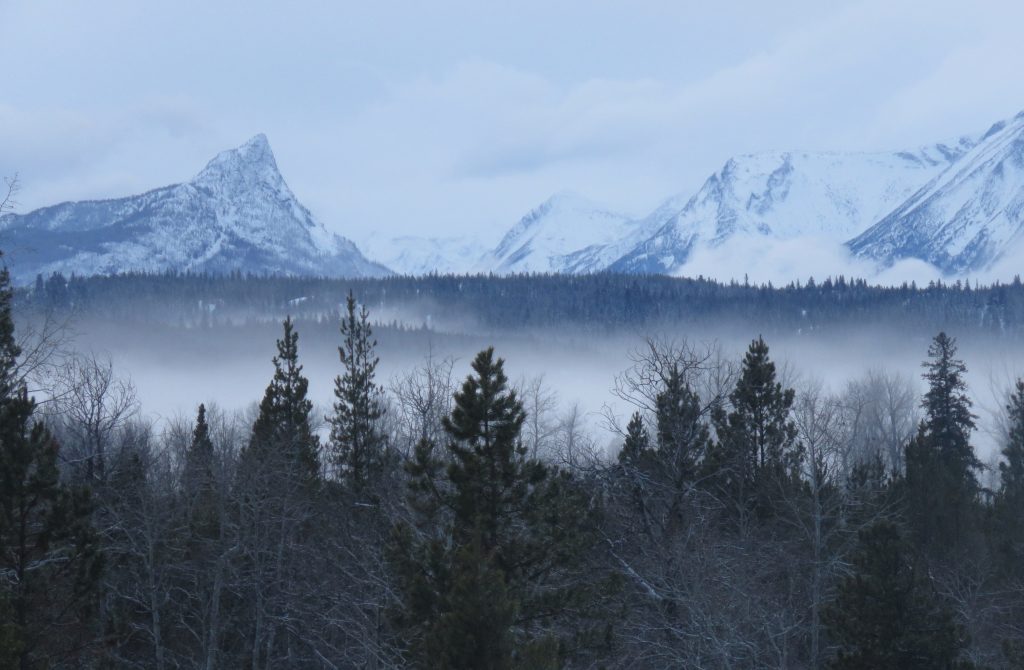 Still, we couldn’t complain about forest fires and smoke this year – except before Easter. At that point it was very warm and exceedingly dry. On Easter Monday a terrible wind slammed around the house. I was working on an edit of Captured By Fire, and looked out of the window to see smoke. A volunteer and I had been burning brush piles 2 days before. We had raked the surroundings down to the dirt. We thought the fire was out. When I examined the ground later, it was not easy to see how the fire had travelled. A spark must simply have jumped several metres into a patch of spindly grass and dead cottonwood leaves.
Still, we couldn’t complain about forest fires and smoke this year – except before Easter. At that point it was very warm and exceedingly dry. On Easter Monday a terrible wind slammed around the house. I was working on an edit of Captured By Fire, and looked out of the window to see smoke. A volunteer and I had been burning brush piles 2 days before. We had raked the surroundings down to the dirt. We thought the fire was out. When I examined the ground later, it was not easy to see how the fire had travelled. A spark must simply have jumped several metres into a patch of spindly grass and dead cottonwood leaves.
I had to get help. Lifted the phone – no dial tone. My private phone extension ran along the ground from the nearest pole – right in the fire’s path. A hot, sunny holiday afternoon – who would be at the computer? I emailed everyone I could think of.
I’d recently purchased a pump and fire hose. The pump sat beside my pond – the hose wasn’t long enough to reach the fire. I sprayed the ground in front as best I could. Couldn’t anyone see the smoke?
I would have to drive out to get help. Ran up to the truck – drove a couple of hundred meters – a tree on the road. I could see the next downed tree. I cut out 3 or four trees – going to take too long. Back to the pump and hose. More spraying. The wind still roaring. Up to the computer. Any answers? One person was checking to see if my message (misspelled in my hurry) was a spam. Emailed a few more. Back along the road to cut a few more trees. Back to the pump.
The wind seemed to be easing. But it had changed direction. It was now pushing the fire into a bit of forest. I heard trees whooshing as they candled.
After 2 hours of this I heard a vehicle door slam near the house. 2 neighbours came down to the pond. They had not seen the smoke, but some hydro guys, cutting fallen trees of the line, had noticed it and alerted the neighbours. They had come in a side-by-side and cut some trees with an axe. They had to borrow my chainsaws to cut the road wide enough for a truck. At last they came back – with another pump and more hoses.
They tried to use my pump, but couldn’t get enough pressure. It turned out that there must have been a defect (I traded it in afterwards and the new one worked much better.) Finally, they got a hose working. The wind had dropped right down by now and the fire was easily put out. 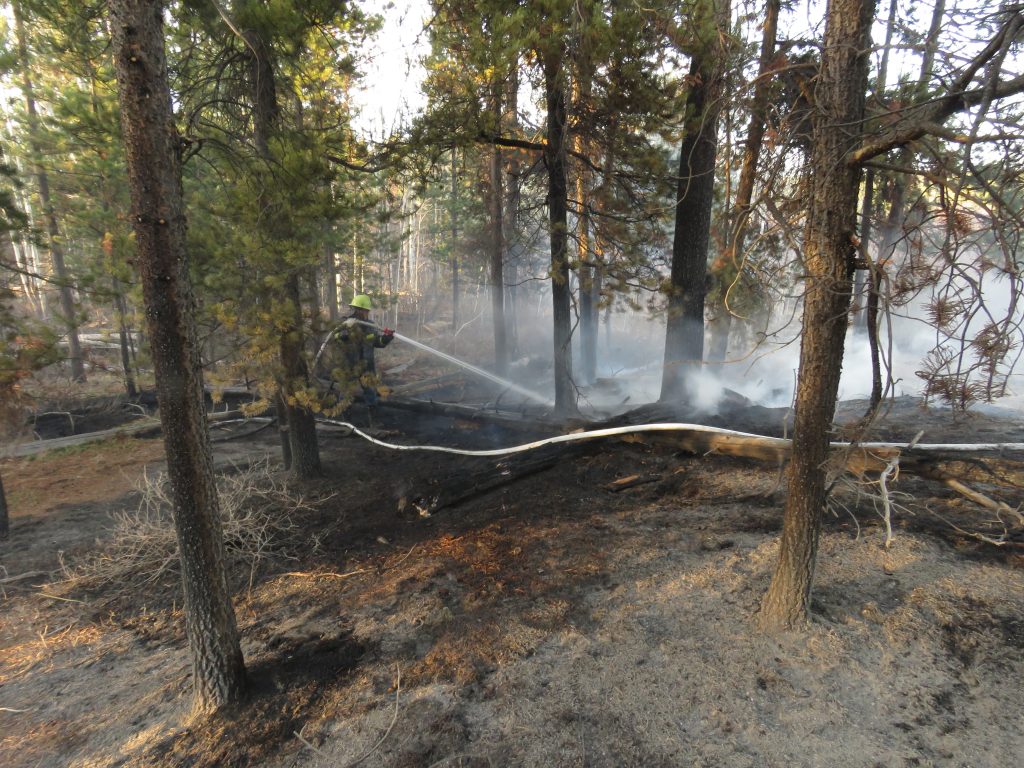 I went through the whole of the 2017 fire season under great stress without any after effects that I was aware of. But this fire really shook me. When I traded in the pump I bought extra hoses and can now reach far beyond my house from the pond. A day or two later it rained so the hoses were never needed. But they were a necessary investment.
I went through the whole of the 2017 fire season under great stress without any after effects that I was aware of. But this fire really shook me. When I traded in the pump I bought extra hoses and can now reach far beyond my house from the pond. A day or two later it rained so the hoses were never needed. But they were a necessary investment.
The other major event of the years was the publication of Captured By Fire.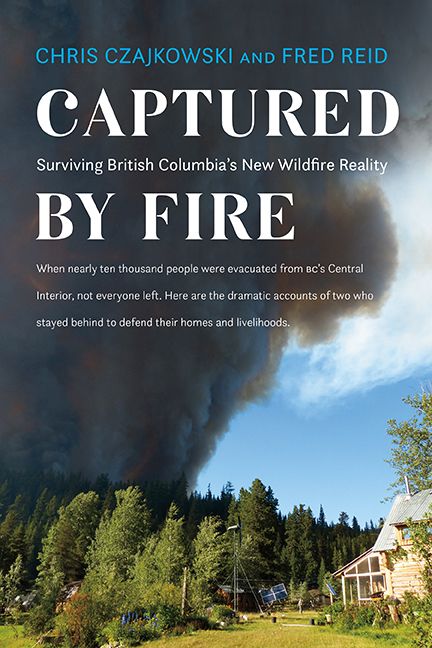 It is my 13th book, and is co-authored by Fred Reid. He stayed home through the Precipice Fire (that is his house in the picture) and had a very different experience than me. My place is in the Cariboo Wildfire Service area, and their policy is to not waste time informing the public what is going on. Sure they were overwhelmed in 2017, but the same thing happens ever fire season. I had to rely on what I could see and Google Earth for information. Fred was under the Coastal Wildfire Service, who were excellent at communicating. Also, Fred’s farm is an open space in a rugged and heavily forested area – an ideal spot for Staging. At one point there were 9 helicopters parked in their yard. So as the fire approached them and eventually swept by on both sides, they had up to date information the whole time. Still, in a fire, no one knows what’s really going to happen until it does – you’ll have to read the book to get the details!
It is my 13th book, and is co-authored by Fred Reid. He stayed home through the Precipice Fire (that is his house in the picture) and had a very different experience than me. My place is in the Cariboo Wildfire Service area, and their policy is to not waste time informing the public what is going on. Sure they were overwhelmed in 2017, but the same thing happens ever fire season. I had to rely on what I could see and Google Earth for information. Fred was under the Coastal Wildfire Service, who were excellent at communicating. Also, Fred’s farm is an open space in a rugged and heavily forested area – an ideal spot for Staging. At one point there were 9 helicopters parked in their yard. So as the fire approached them and eventually swept by on both sides, they had up to date information the whole time. Still, in a fire, no one knows what’s really going to happen until it does – you’ll have to read the book to get the details!
It took 2 years of very hard work to put both stories together, but it has made an excellent book with several good reviews. However, on the book tour that Fred and I made in October, it did not sell well. Everyone who came up to me remembered my previous book published two years ago: Harry – A Wilderness Dog Saga – and the first question everyone always asked was: Did you bring your dog? Maybe I should stick to writing talking dog stories!
By the way, for all you dog-story followers, I have to inform you that Badger made his last ride to the vet to be put down. He was getting very doddery and I knew I would be away for 5 weeks on the book tour – I could not expect my dog-sitters (a great young couple from Germany) to take responsibility for him – especially as the nearest vet is 3 and half hours’ drive away. Badger was 13 and a half. 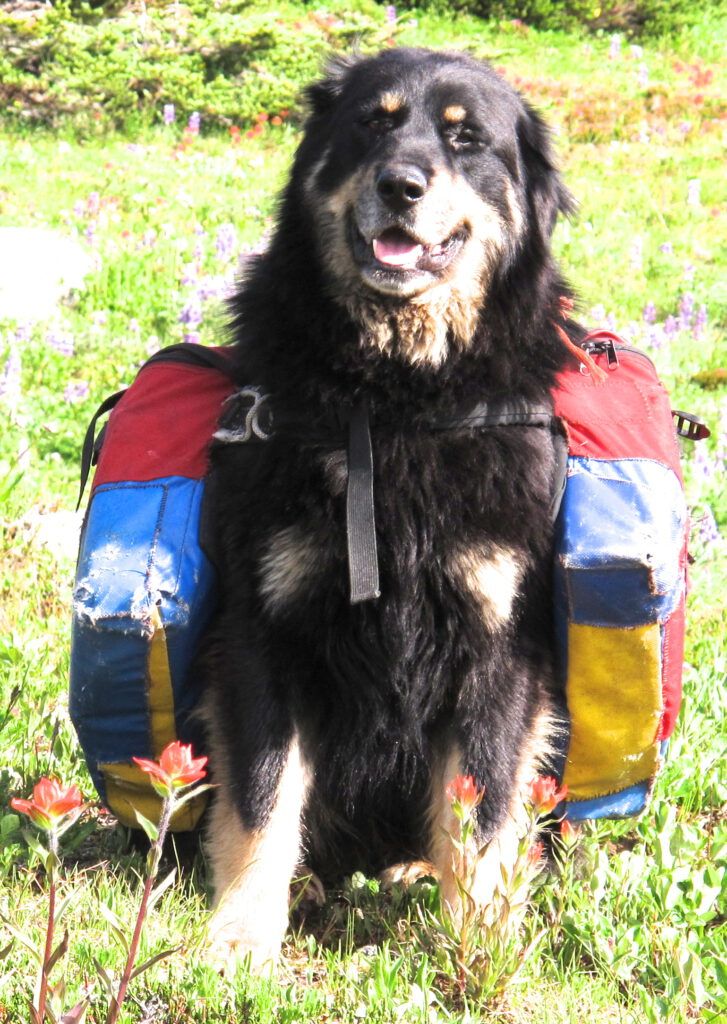 So there we have it. A mostly humdrum year, but despite the weather and fire trauma, pleasant enough. I sneaked one fine day trip to Perkins Peak – my only alpine fix for the year – and a couple of visits to Bella Coola. Next year I will have no book tour – but plan on visiting the Yukon again. Always plans. Never a lack of things to do!
So there we have it. A mostly humdrum year, but despite the weather and fire trauma, pleasant enough. I sneaked one fine day trip to Perkins Peak – my only alpine fix for the year – and a couple of visits to Bella Coola. Next year I will have no book tour – but plan on visiting the Yukon again. Always plans. Never a lack of things to do!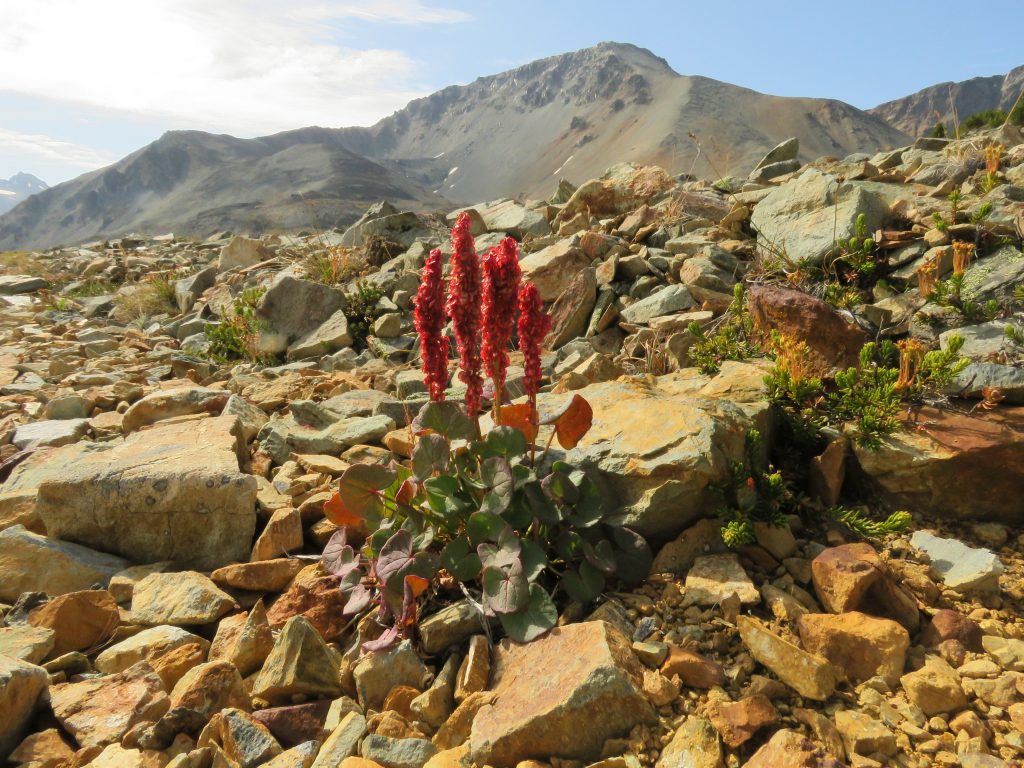 And so the world reaches the limit of its orbit and starts the journey back toward fire season and bugs and all the other good things of life. Makes the beautiful days all the more precious. I really love this beautiful world!
And so the world reaches the limit of its orbit and starts the journey back toward fire season and bugs and all the other good things of life. Makes the beautiful days all the more precious. I really love this beautiful world!
Happy Solstice Everyone.
SOLSTICE. 2018
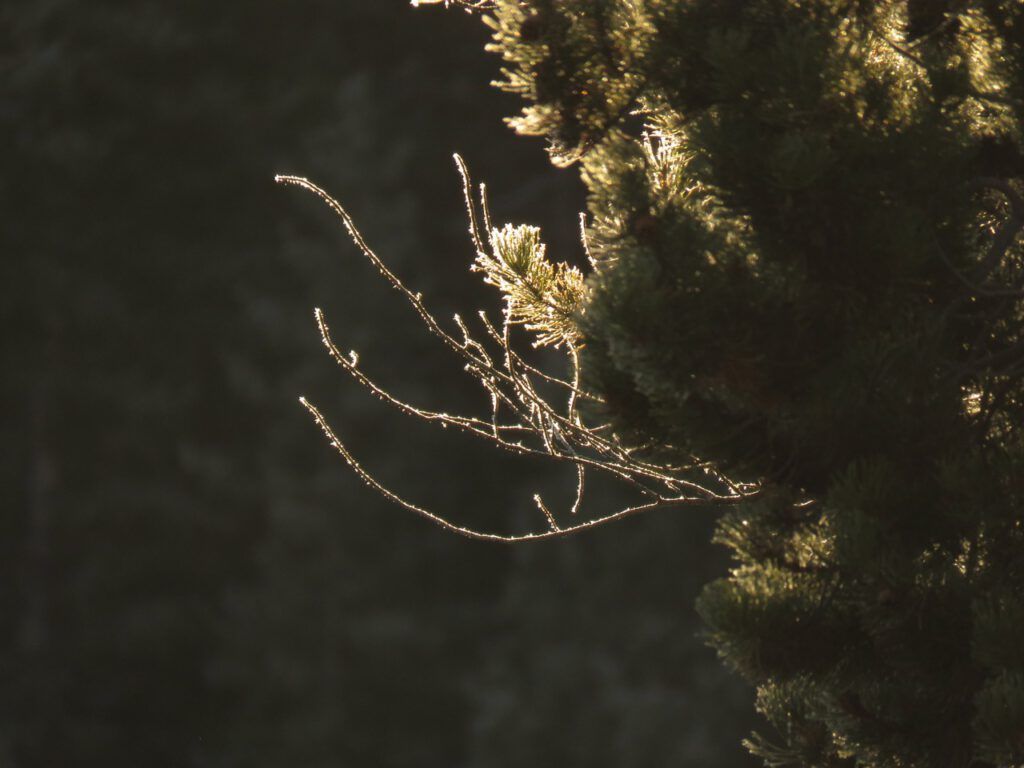
Three things have been my principal occupations throughout 2018. The first and most different was hosting a refugee family from Sudan. The Tatla community had applied to sponsor one more than 2 years previously. At first I thought it ridiculous to bring city foreigners, who might not speak English, and who might very well be Muslim, to our remote community, a place where even few Canadians would want to live, but as time went by I could see that our little community had a lot to offer. Mainly that, without any neighbours of their own culture, they would have to integrate with ours. We heard so many stories where refugees who went to enclaves of their own people, and who, although they attended the required English lessons, learned nothing as they were unable to carry their lessons into their daily lives. So many refugees who have been in Canada a year, especially the wives, rarely meet English-speaking Canadians and so integration is difficult.
After years of getting promises that came to nothing, we were suddenly informed that a family was coming to us in about 5 weeks time, in the middle of February. The committee had acquired a log cabin for them to live in – small, but with electric heat, running water and a flush toilet as well as a wood stove; some committee members felt the cabin to be too small and ill-equipped: those of us who live without many of these amenities thought it sounded pretty luxurious.
The family, mum, dad and two girls 11 and 7, flew to Kamloops, where they were met by committee members. A couple of days later, kitted out with new winter clothes, they were driven the 7 long hours to Tatla. It so happened that it snowed hard all the way – and their first night was the coldest of the year, where the temperature dropped to -32C. Poor Hussna, the mum, was horrified. Desperately homesick, she could not believe she was not surrounded by people – throughout her time with us she maintained most vociferously that she hated trees – never wanted to see another one again. Fortunately she had a cousin well established in San Diego who persuaded her to hang in there and give it a try. She was never to be Tatla material, but she applied herself diligently to learning English, of which she knew not a word when she arrived. She is a smart and intelligent woman who will always strive hard to get somewhere. Both girls are very bright, too. The elder, Sabrin, aspires to be a doctor. The younger, Sara, is a little monkey who immediately made lots of friends at school and was soon jabbering away in a mix of English and Arabic; when I spoke to her recently on the phone she no longer had a foreign accent.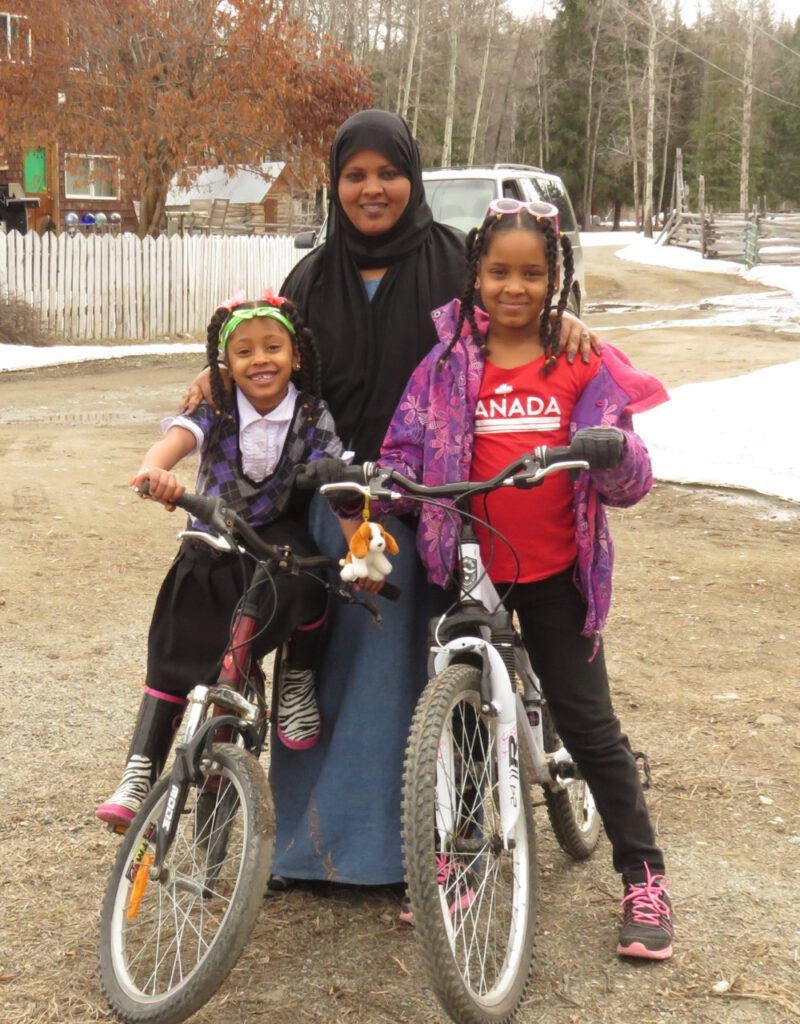 I had most to do with Hussien (this is how his name is spelled on his passport.) One of the committee members had 20 years’ experience teaching foreign students, and she mapped out a series of lessons for both parents. (The children started school right away.) Hussien knew a bit of English and he soon proved to have a great sense of humour. He immediately embraced Canadian winter culture – he was taken ice fishing, where he caught more fish than anyone, much to the Canadian fishers’ chagrin! I taught him English once a week – other volunteers taught on the other two days. I promised I would teach him how to drive a car once the snow went. At first you could see that the family did not believe us when we said the snow would go and it would get almost as hot as Sudan. But gradually the seasons changed and suddenly it was bug season and then another hot, smoky fire season. Two of us took Hussna and Hussien to a disused airstrip near Tatla. I marked out parking spaces with flagging tape and placed cardboard boxes to represent other cars and pedestrians.
I had most to do with Hussien (this is how his name is spelled on his passport.) One of the committee members had 20 years’ experience teaching foreign students, and she mapped out a series of lessons for both parents. (The children started school right away.) Hussien knew a bit of English and he soon proved to have a great sense of humour. He immediately embraced Canadian winter culture – he was taken ice fishing, where he caught more fish than anyone, much to the Canadian fishers’ chagrin! I taught him English once a week – other volunteers taught on the other two days. I promised I would teach him how to drive a car once the snow went. At first you could see that the family did not believe us when we said the snow would go and it would get almost as hot as Sudan. But gradually the seasons changed and suddenly it was bug season and then another hot, smoky fire season. Two of us took Hussna and Hussien to a disused airstrip near Tatla. I marked out parking spaces with flagging tape and placed cardboard boxes to represent other cars and pedestrians. 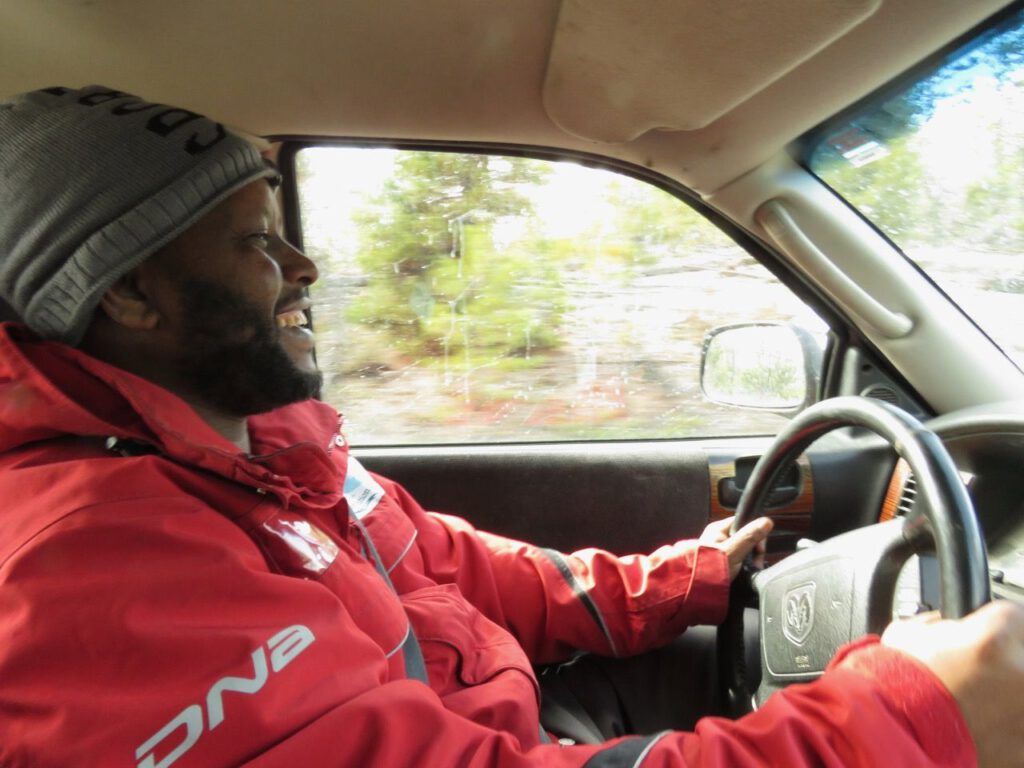 Hussien laughed gaily when I told him he’d smashed a very expensive car, killed two pedestrians, and backed into a supermarket wall, but he actually picked up the mechanics of driving very well. I could not take him onto the highway in traffic, of course. During his English lessons I spent a lot of time going through the BC learn-to-drive book where he had to master all kinds of complicated words and phrases. The book is not written for people who have a limited command of English. They will constantly say the same thing in three different ways, using long and unnecessary words. There were Arabic translations of the book and the on line practice tests, but Hussien couldn’t read Arabic. (He was born in Eritrea.) Then we heard that the family would be moving to Lethbridge, Alberta, in August, and that province has different driving rules so we had to go through another book and series of practice tests. Once in Lethbridge, it took him four attempts to pass the initial written test. “The questions,” he told me, “were not the same as in the practice tests.” He could have had a translator, but that would have cost $200, plus he would have had to go to Calgary to take it – more bus expense.
Hussien laughed gaily when I told him he’d smashed a very expensive car, killed two pedestrians, and backed into a supermarket wall, but he actually picked up the mechanics of driving very well. I could not take him onto the highway in traffic, of course. During his English lessons I spent a lot of time going through the BC learn-to-drive book where he had to master all kinds of complicated words and phrases. The book is not written for people who have a limited command of English. They will constantly say the same thing in three different ways, using long and unnecessary words. There were Arabic translations of the book and the on line practice tests, but Hussien couldn’t read Arabic. (He was born in Eritrea.) Then we heard that the family would be moving to Lethbridge, Alberta, in August, and that province has different driving rules so we had to go through another book and series of practice tests. Once in Lethbridge, it took him four attempts to pass the initial written test. “The questions,” he told me, “were not the same as in the practice tests.” He could have had a translator, but that would have cost $200, plus he would have had to go to Calgary to take it – more bus expense.
Another thing I did with Hussien was to bring him to my place and have him help me with task number two. After the terrible fire season on 2017, I resolved to make my place more fire-smart. The forests on my property and the nearby bush are full of fallen, beetle-killed trees and mistletoe distorted “witches brooms” that sweep close to the ground. All this had to be cleared and burned. Burning times are limited, however – by the time the ground is free of snow it is almost too late to be safe (and illegal). And one can’t start burning again until later in September. It is even too dangerous to build burn piles as in the event of a forest fire, they will throw flames high into the air and torch neighbouring trees. The trick is to prepare the ground so that an encroaching fire stays low where it might kill a few trees but won’t get out of control. This has turned out to be an enormous job. I used my 10 different volunteers (they LOVED it when Hussien came as he was such a hard worker) to clear a great deal of stuff, but there is at least another summer’s work – and worry – before I get the property the way I want it.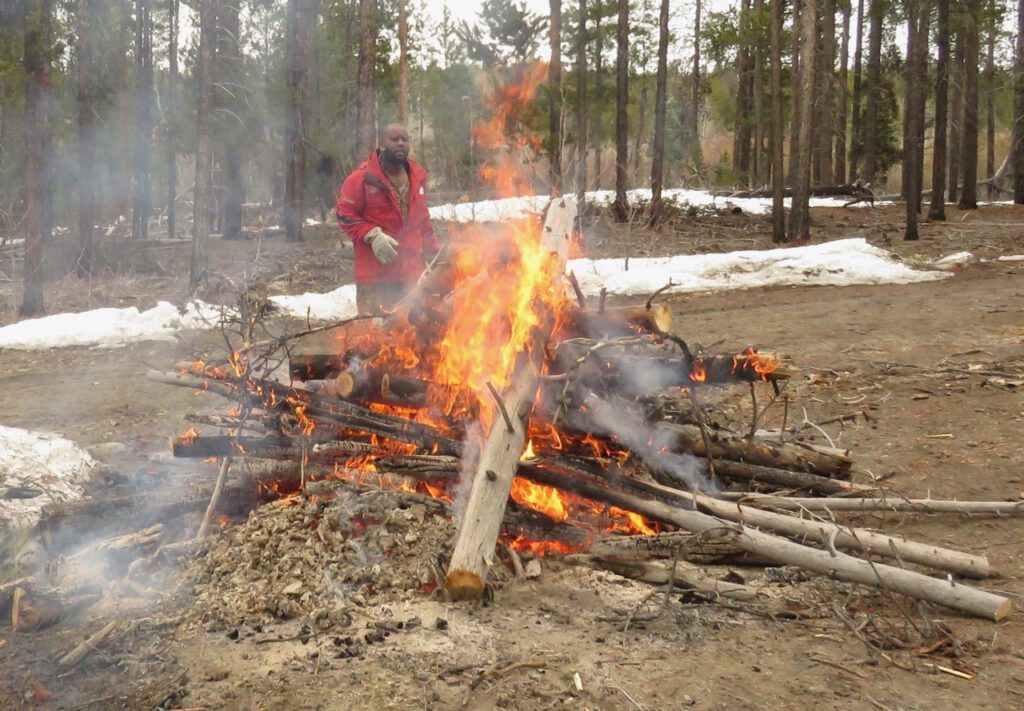 2017 was touted as a major record-breaking season in terms of fire-related dollars for the province of BC, both in firefighting and property damage. The 2018 fires started later – but they beat even 2017’s record. Miraculously, the west end of the Chilcotin had almost no lightning strikes but there were huge fires north and several fires south and west so no matter which way the wind blew, I got smoke. Nuk Tessli was seriously threatened by two different fires but the wind changed and diverted them just in time. In 2017 we had long periods of smoke but also high winds that periodically cleared the air – and stirred up the fires. This year we had little wind – and the smoke simply sat there. For a whole month. Bees wouldn’t work; chickens went off the lay; sunflowers never swivelled round, they just hung their heads and stared at the ground.
2017 was touted as a major record-breaking season in terms of fire-related dollars for the province of BC, both in firefighting and property damage. The 2018 fires started later – but they beat even 2017’s record. Miraculously, the west end of the Chilcotin had almost no lightning strikes but there were huge fires north and several fires south and west so no matter which way the wind blew, I got smoke. Nuk Tessli was seriously threatened by two different fires but the wind changed and diverted them just in time. In 2017 we had long periods of smoke but also high winds that periodically cleared the air – and stirred up the fires. This year we had little wind – and the smoke simply sat there. For a whole month. Bees wouldn’t work; chickens went off the lay; sunflowers never swivelled round, they just hung their heads and stared at the ground.
The third big task of the year was working on a book about the 2017 fires. I had planned to start another writing project entirely but thought I should scribble down a bit about the fire situation – maybe I could get a couple of useful chapters for another book. But once I started, the manuscript grew. It was one of the most challenging I have tackled. Not because of my own experiences, but because of all my neighbours’ contributions to the whole situation of being under evacuation order and alert, of having Highway 20 closed for nearly two months – which mean no mail delivery, and many other glitches that outsiders never knew about. Each neighbour had his own story – the clinic staff; the helicopter pilots; local people organizing themselves when the regular firefighters were too busy elsewhere to get to us – far too long to go into in this newsletter. But one neighbour lives in the Precipice, a valley with snowmobile access only in winter, where live two families divided by a ranch. One couple, Fred and Monika, stayed home during the fire, and their account of their 48-day ordeal while the fire approached them, surrounded them, and passed them is truly amazing. Fred wrote his experiences and I wrote mine. Instead of the three chapters I had envisioned, we ended up with a book and a half, which had to be severely pruned; also the material had to be fitted together so that it made sense. A big job with two strong egos to deal with!
Talking to a helicopter pilot gave me some very interesting information totally unrelated to the fires. The pilot had flown a certain Dan Smith to what was left of the Klinaklini Glacier – he had been doing research for 25 years with U Victoria about the retreating ice. Dan had found fully mature subalpine trees that had been sheared off by an avalanche 6,000 years ago. 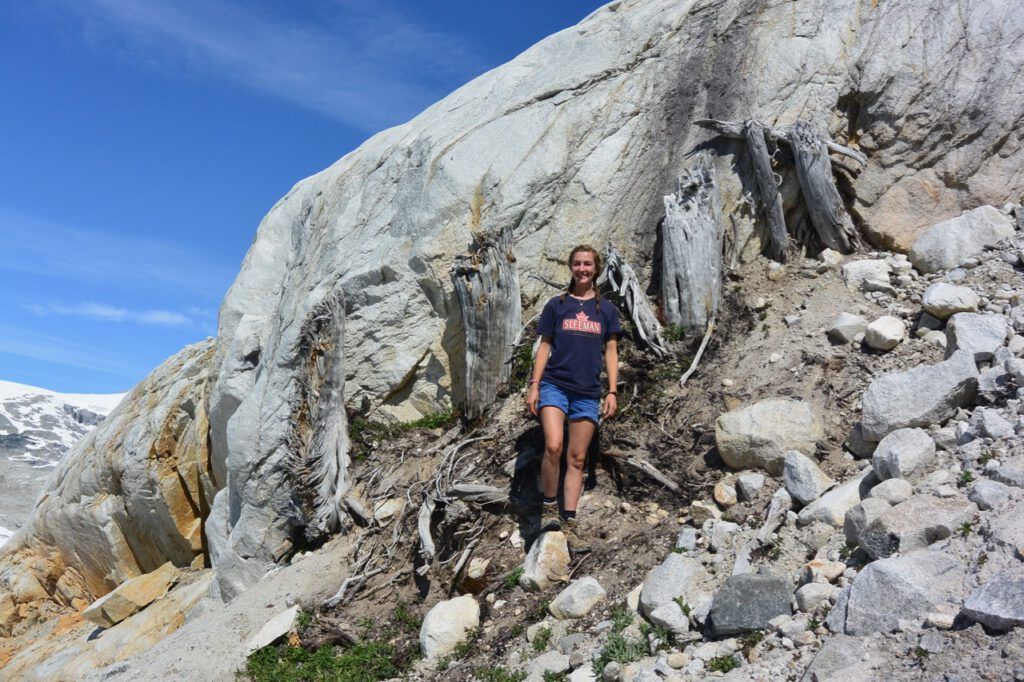 They were the same species that currently grow around Nuk Tessli. We are told that the last ache age finished 10,000 years ago. But a forest this size does not grow in five minutes – it takes hundreds of years to establish at these altitudes. Therefore, although we are all appalled at the rate of global warming – 6,000 years ago, it was a great deal warmer here than it is now. Maybe I’ll soon be able to grow tomatoes without a greenhouse.
They were the same species that currently grow around Nuk Tessli. We are told that the last ache age finished 10,000 years ago. But a forest this size does not grow in five minutes – it takes hundreds of years to establish at these altitudes. Therefore, although we are all appalled at the rate of global warming – 6,000 years ago, it was a great deal warmer here than it is now. Maybe I’ll soon be able to grow tomatoes without a greenhouse.
Because the fire book was such a big job, it got sent in late. And I didn’t hear from the publisher – and didn’t hear. I sent emails but no replies came (I know from experience how the publisher’s spam folder swallows things up.). So in the end I wrote to my marvellous publicist to see if she had heard anything. 5 days later I wrote again saying, if it was rejected, I would like to be able to send it elsewhere. At which an emergency email came back. “Don’t send it anywhere else – it is already scheduled for fall 2019!” So by a roundabout way I know that I will be doing a book tour for it then, even if I have not had official confirmation. Pre-Christmas is an insanely busy time for publishers – but they could at least have dropped me a line without me begging for it!
I’ll finish with a picture from Nuk Tessli. I went up there to guide for a few days again this year. It is interesting to note that the flowers bloom consistently earlier now. In the past around the 20th July, only the earliest would be in flower; now the main display is in full bore at this time.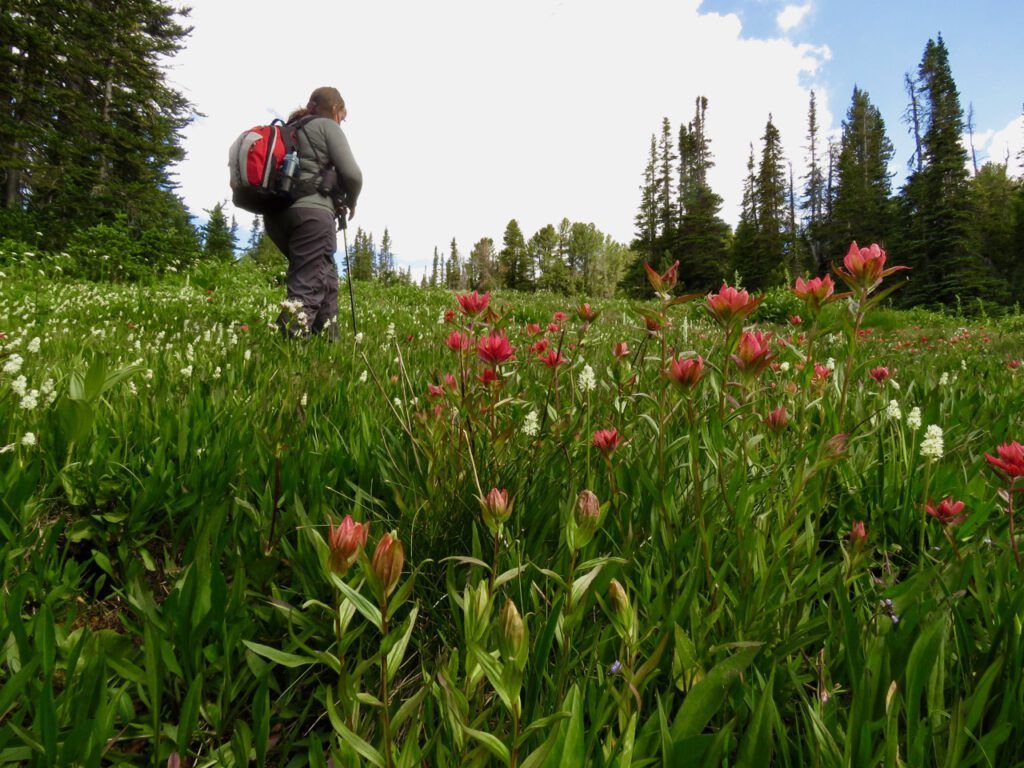
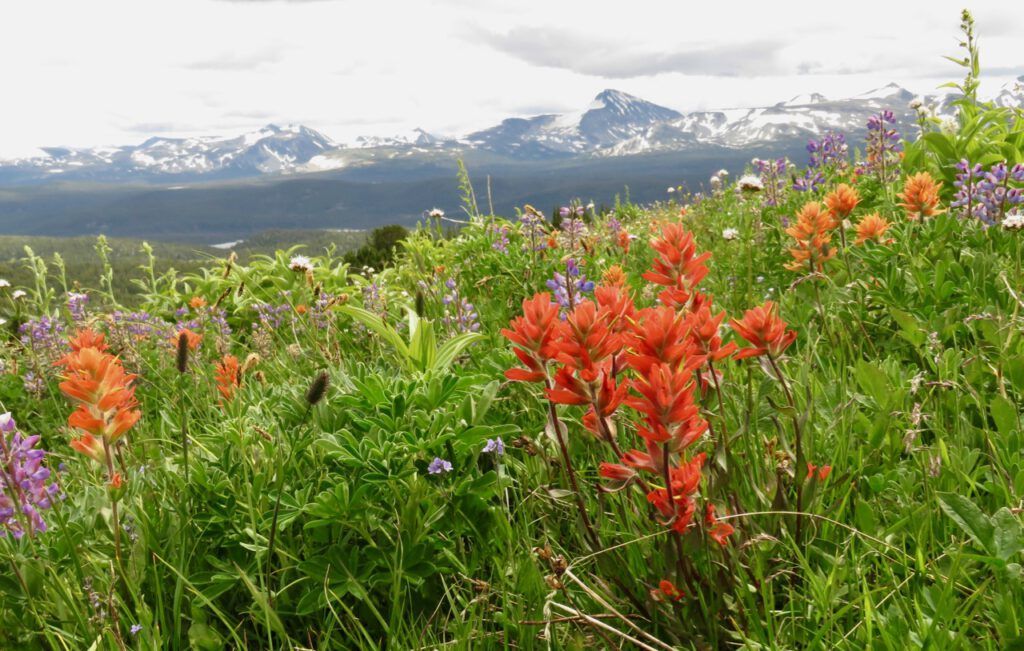
Happy 2019!
_____________________________________________________
SOLSTICE 2017
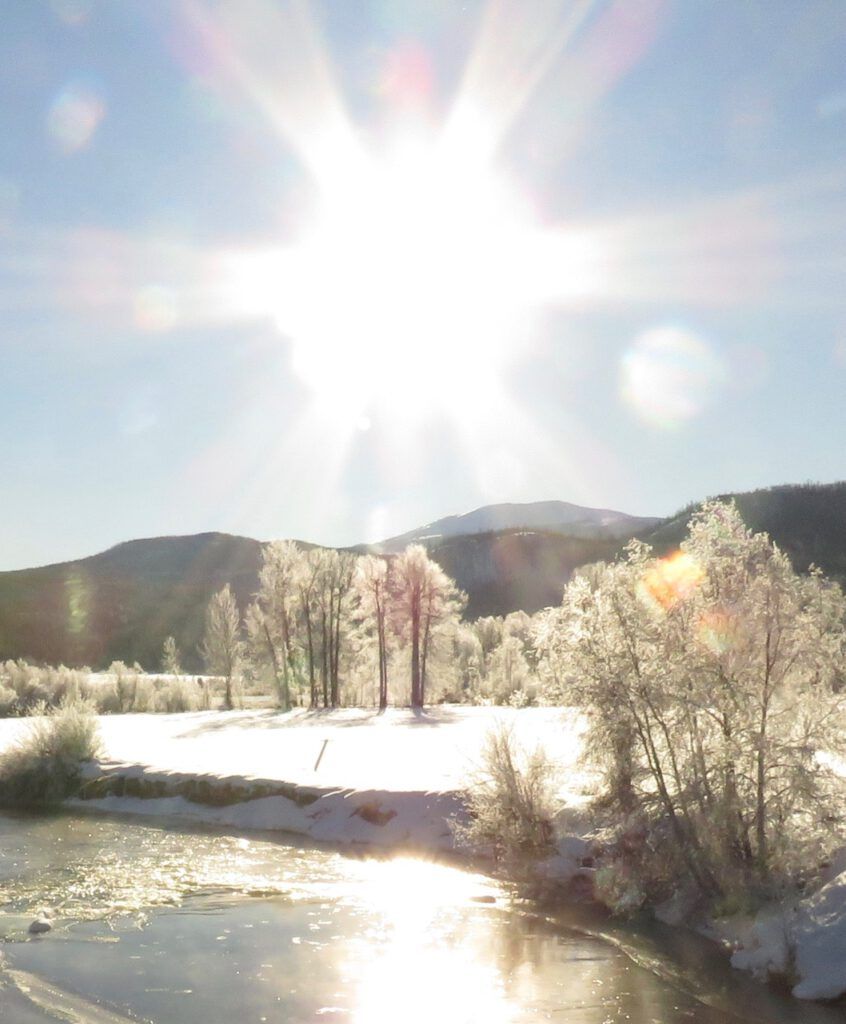
It has been a year like no other. The all-consuming event was a 2-month struggle with forest fires that threatened my home and caused almost every summer plan for every resident in west central British Columbia to be cancelled. Either because of the of the fire itself; the threat of fire and mass evacuations; or because both Highway 20 west of Williams Lake and a large part of Highway 97, which runs north/south through Williams Lake, were closed.
I was in Williams Lake on July 7th, the day dozens of fires erupted all at once, due to dry lightning storms. A steep forested hill borders the east side of town; around mid day I saw lighting strike the top of the hill several times. Within an hour huge columns of black smoke were roiling up. I was meeting a friend off the bus and had to wait in town until it arrived at 5.30. Fortunately the city fire was in the opposite direction in which we wanted to go. We lost no time in getting out of there.
It takes 3 and a half hours to drive home. The road goes up and down a couple of long hills then crosses the Fraser River before climbing a steep scarp onto the Chilcotin proper. The black city smoke plumed behind us – a hot clear sky spread ahead of us. But what was that smudge on the horizon? As we grew closer we could see a string of fires pouring smoke – one moment they were off to the side, then as the road turned, we were heading straight towards them. Would we get by or did the highway plunge through the middle? (No time to stop or to clear the fly splats off the windshield.)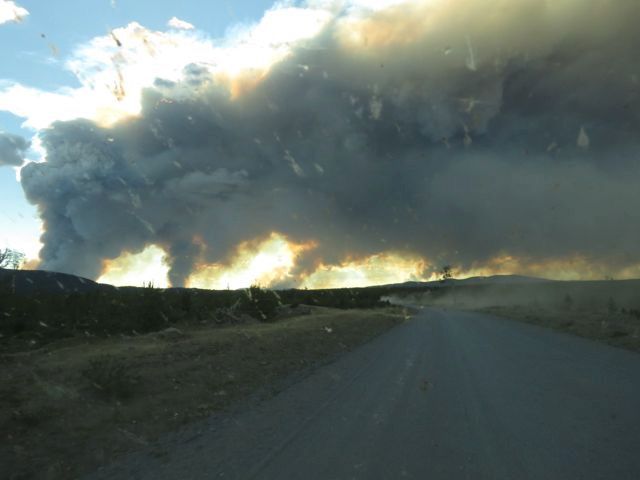 An hour from Williams Lake we were turned back by a cop. Road closed. The last thing I wanted to do was head back to Williams Lake. Other travellers were congregating in a rancher’s field about 30 km back from the fires. Someone there knew a way round via logging roads. “Its very rough and I won’t be going slow,” he said. We plunged after him into a maelstrom of dust and smoke, lurching and crashing in our guide’s wake. Other vehicles were coming the other way, all hurrying through, and we had to slew to the edge of the gravelly ditch as the road was barely wide enough for two vehicles. The dark smoke reared over and around us, compounding the gloom of the dust. We glimpsed flames at times – but then we were through and into the calm Chilcotin again. The towering piles of smoke still poured into the sky but they were behind us.
An hour from Williams Lake we were turned back by a cop. Road closed. The last thing I wanted to do was head back to Williams Lake. Other travellers were congregating in a rancher’s field about 30 km back from the fires. Someone there knew a way round via logging roads. “Its very rough and I won’t be going slow,” he said. We plunged after him into a maelstrom of dust and smoke, lurching and crashing in our guide’s wake. Other vehicles were coming the other way, all hurrying through, and we had to slew to the edge of the gravelly ditch as the road was barely wide enough for two vehicles. The dark smoke reared over and around us, compounding the gloom of the dust. We glimpsed flames at times – but then we were through and into the calm Chilcotin again. The towering piles of smoke still poured into the sky but they were behind us.
Two and a half hours to go and although we were so close to the longest day, it was late and it grew dark. The road was virtually empty (as it often is) and here there was no wind. It was a calm, beautiful evening. Then, just half an hour before home, in the moonless dark, I smelled smoke. Not a campfire or stovepipe smoke (there would not have been any in that area, anyway) but the unmistakable smell of burning living vegetation. A further ten minutes and we could see flames in the darkness on a ridge south of the road as we drove through downtown Kleena Kleene. They were small flames, though, simply a few small candles burning in the night. At home, 4 kms north, it was quiet, and the air was dark and sweet.
The next day we walked onto nearby hills and later drove back to downtown Kleena Kleene to see what was going on. The fires had spread a little and a single helicopter was buzzing around bucketing – ie squatting over a pool or a pond, collecting a bucket of water at the end of a long cable, then flying it to a target and letting the water go. There was a small fire to the north of the highway and this the pilot managed to put out. We could see no smoke but steam rose every time he dumped on it and there was never any more problem with that spot. This was a godsend. That hot spot was only 2 km away and there were no barriers between us – no bodies of water or roads – and it would have been a lot more serious for us if it had been allowed to burn. The other fires were bigger, though, and they spread in spite of the helicopter pilot’s efforts.
On day three we heard that Williams Lake was evacuated and also the places where we had been turned back from Williams Lake had been consumed by fire. Several properties had been destroyed. Some people had been away from home and had had no time to rescue anything. It was all so sudden. At home, the wind became stronger and soon black, out-of-control smoke was rolling from the fires. 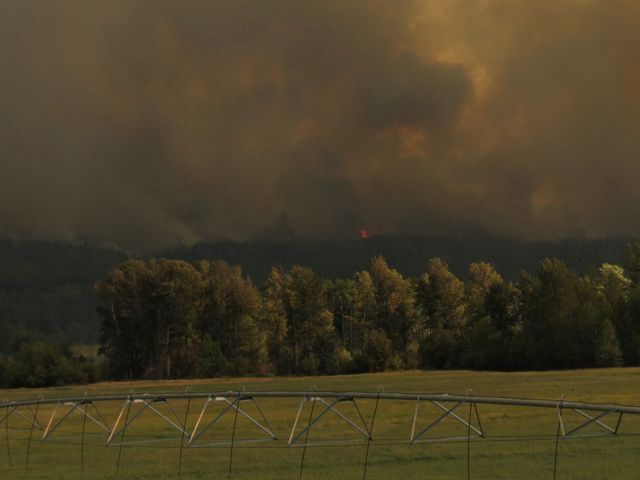 In 2004, I watched the smoke from a fire near Nuk Tessli that travelled 22 km in 2 days: the 4 kms between my place and the Kleena Kleene fire would count for very little if the wind was wrong, even though there was a river and the highway in between.
In 2004, I watched the smoke from a fire near Nuk Tessli that travelled 22 km in 2 days: the 4 kms between my place and the Kleena Kleene fire would count for very little if the wind was wrong, even though there was a river and the highway in between. 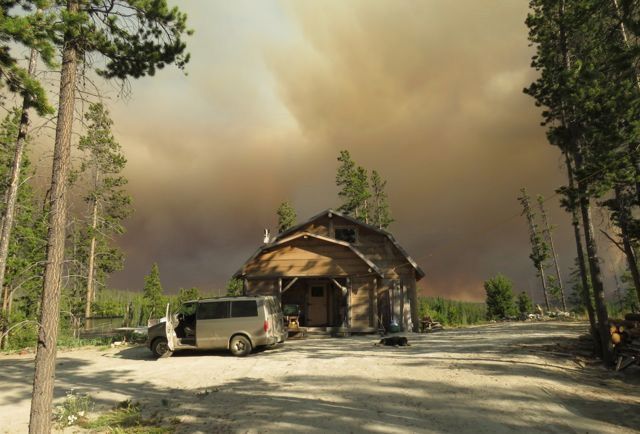 I knew there was a strong possibility I would have leave and started packing. Sure enough, that evening the cops came by and told me I was under an Evacuation Order. This meant I was supposed to leave at once. Highway 20 was still open – huge quantities of water were being dumped on it to keep it viable for firefighters and evacuees, and now that Williams Lake had been evacuated, we were supposed to head to Prince George. (That’s 7 hours’ drive away.) Once we went through the barrier manned by cops, we would under no circumstances be allowed home. The Red Cross would provide accommodation for people and pets (and those who went to such places all said how well they had been treated.). But I wanted to go west. My friends had a cabin 2 and half hours away that I could use in the Bella Coola Valley. The cops didn’t like this – they wanted complete control of everyone. Fair enough – throughout this terrible firestorm not a single life was lost. But we who live in an area like this are not like city folk. A fire boss I talked to later said: “What if you try and run and there’s a tree across the road?” “I cut it out with a chain saw!” I retorted. He had the grace to look abashed. But their computer programs do not factor in 70-year-old ladies who habitually carry and use chain saws. The local cop was only doing his job. He had a form. He wrote down the name of my next of kin and my dentist – this last so they could identify my body by it’s teeth.
I knew there was a strong possibility I would have leave and started packing. Sure enough, that evening the cops came by and told me I was under an Evacuation Order. This meant I was supposed to leave at once. Highway 20 was still open – huge quantities of water were being dumped on it to keep it viable for firefighters and evacuees, and now that Williams Lake had been evacuated, we were supposed to head to Prince George. (That’s 7 hours’ drive away.) Once we went through the barrier manned by cops, we would under no circumstances be allowed home. The Red Cross would provide accommodation for people and pets (and those who went to such places all said how well they had been treated.). But I wanted to go west. My friends had a cabin 2 and half hours away that I could use in the Bella Coola Valley. The cops didn’t like this – they wanted complete control of everyone. Fair enough – throughout this terrible firestorm not a single life was lost. But we who live in an area like this are not like city folk. A fire boss I talked to later said: “What if you try and run and there’s a tree across the road?” “I cut it out with a chain saw!” I retorted. He had the grace to look abashed. But their computer programs do not factor in 70-year-old ladies who habitually carry and use chain saws. The local cop was only doing his job. He had a form. He wrote down the name of my next of kin and my dentist – this last so they could identify my body by it’s teeth.
Of course one never knows what to take in situations like this. I was evacuated twice from Nuk Tessli because of fires and although I had a bit of warning, I had very little choice as everything had to fit into a plane – and both times other passengers and dogs took up a lot of the space. Here, however, I had 2 vehicles and the luxury of another driver. We loaded the van with dogs, a ton of food that I could eat (because of sensitivities I cannot find much to suit me in stores) and our personal stuff. Into the truck went a few items hard to replace like winter blankets and down coats, a few favourite and out of print plant books, and the like. The vast amount of memorabilia was abandoned as I did not know where to start with it. I hooked the trailer onto the pickup and loaded the ATV and chains, snowplough, my chain saws (except on that I kept in the van) propane tanks (even empty ones would explode), spare gas cans, and other similar items. They could be replaced but were expensive. Most residents here, myself included, had no fire insurance. Payments would be exhorbitent as we had no local fire fighting organization or equipment. The awful dread was losing the house. It had taken years to build and a lifetime of scrimping and saving to get it to it’s present state. The design and location of my home is very important to me. At 70 years’ old I would not have the time or energy to start again.
We left the truck at a friends’ place at Nimpo Lake (40 mins west) then drove down the Hill to the promised cabin. The friend I had met in Williams Lake now had to find a way to get home. We had planned to hike at Nuk Tessli, then I would have driven her back to Williams Lake to catch the bus east again. As it was, she had to catch two ferries from Bella Coola to Prince Rupert, then the train to Prince George, before she could get back onto the bus system again to go home to Saskatchewan. She had a big adventure all right – just not the one she thought she was going to have.
I would have been a great deal more stressed if I had been unable to monitor the fires on line. The BC Forestry service Wildfires of Note site was virtually useless. If there was any information it was usually days out of date. The USDA Forest service provided a Modis heat detection map updated every 3 hours, and the Google Earth fire overlay, both of which were very useful. (I am not giving links as the data is not current.) Even Drive BC, which detailed the road closures was helpful. I also checked several weather forecasts and “Windfinder” and could build up a pretty good picture of what was happening. I “never” do Facebook – but neighbours were surrounded by the Precipice Fire further west and they posted once or twice a day. It was usually the first site I looked at when I got up. It was a most dramatic series of writings and pictures. Never have I been as much a slave to the Internet as I was during those two months.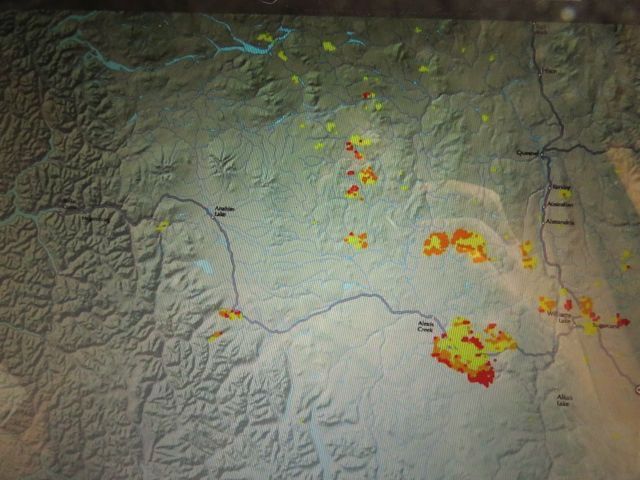 Above is the USDA Modis site quite early on in the fires. The dark line across the ma- is Highway 20. Williams Lake is where Highway 20 meets the north south road of Highway 97. Yellow shows old fires, even ones that are out. Orange is cooler, and red is violent. The big blob near Alexis Creek is where the cops stopped us driving home from Williams Lake. The Kleena Kleene fire is west and a great deal smaller but still very active. My place is just north of the KK fire and on the east side of the road. The Precipice Fire is barely noticeable on this map, being a small yellow blob west of Anahim Lake.
Above is the USDA Modis site quite early on in the fires. The dark line across the ma- is Highway 20. Williams Lake is where Highway 20 meets the north south road of Highway 97. Yellow shows old fires, even ones that are out. Orange is cooler, and red is violent. The big blob near Alexis Creek is where the cops stopped us driving home from Williams Lake. The Kleena Kleene fire is west and a great deal smaller but still very active. My place is just north of the KK fire and on the east side of the road. The Precipice Fire is barely noticeable on this map, being a small yellow blob west of Anahim Lake.
The websites indicated that although the fires were spreading, they were not heading towards my place. It was damper and fairly smoke free in the Bella Coola Valley (although that was not always to be the case.) Firefighting helicoters rattled back and forth continuously on their way to the Precipice Fire. Four days later I took a chance and drove back up the sunny mountainside and into the thick pall of smoke that covered the area around Kleena Kleene. I spent 5 hours there watering the garden but the smoke meant I could see nothing and breathing was uncomfortable, so back down the Hill I went again. Locals who had suitable machinery (skidders, cats, water tanks etc, and the lone helicopter outfit) had banded together and were building fireguards where they could. The government frowns on this, but government resources were already far too stretched in the east where huge tracts were now evacuated and fires were now being fought on every front. It takes quite a long time to mobilize the enormously cumbersome fire-fighting machinery and we didn’t get any outside firefighters for a couple of weeks. Then they came from Eastern Canada, Australia, and even Mexico.
The pattern of going up and down the Hill happened several times and this is what saved my garden. Stuff in the greenhouse was cooked – I could not risk leaving doors and ventilators open while I was gone. Then the Precipice fire between me and Bella Coola started to get more dangerous. Police barriers were now erected on the highway in the west as well as the east. That was when the army came in. Several camps were set up along the Chilcotin, each containing several hundred firefighters. A friend saw them arrive at Nimpo. The minute they decanted from their vehicles they all got their cell phones out. But of course there is no reception here. One local firefighter said he even had to educate an incomer as to how to use a satellite phone. They came in great numbers but did not come prepared.
According to the evacuation laws, if I went through those barriers I would not be allowed home. Nothing for it but to stay put. I never unpacked the van once in 2 months. Sometimes the smoke was so bad I slept in masks (it was usually worse at night) and sometimes the roaring wind and towers of smoke heading straight towards me were absolutely terrifying. 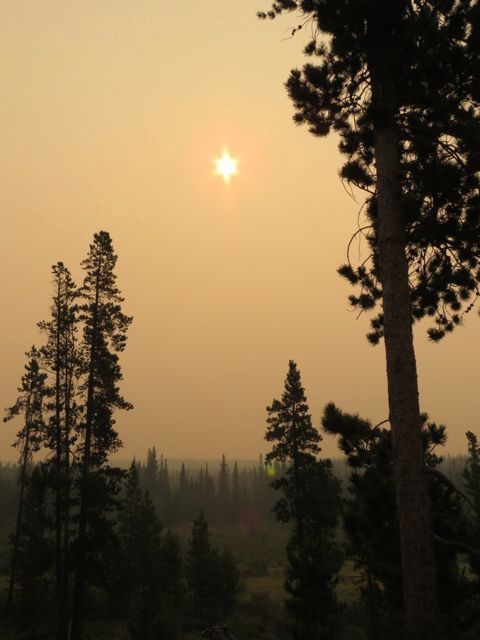 The days were brown. Many people commented that flowering plants did poorly this summer (peas etc.) and we all put it down to the all-pervading smoke.
The days were brown. Many people commented that flowering plants did poorly this summer (peas etc.) and we all put it down to the all-pervading smoke.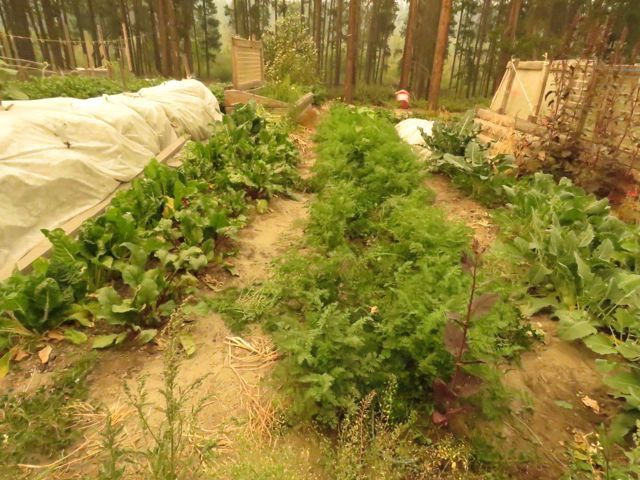 Ash and burned leaves fell often. I would have left at the drop of a hat at these times – if I’d been able to come home when things quieted down. The government said that it was their mandate to keep everyone safe – and indeed no lives were lost. But because of the ridiculous exclusion law I put myself in more danger than I would have done otherwise.
Ash and burned leaves fell often. I would have left at the drop of a hat at these times – if I’d been able to come home when things quieted down. The government said that it was their mandate to keep everyone safe – and indeed no lives were lost. But because of the ridiculous exclusion law I put myself in more danger than I would have done otherwise. 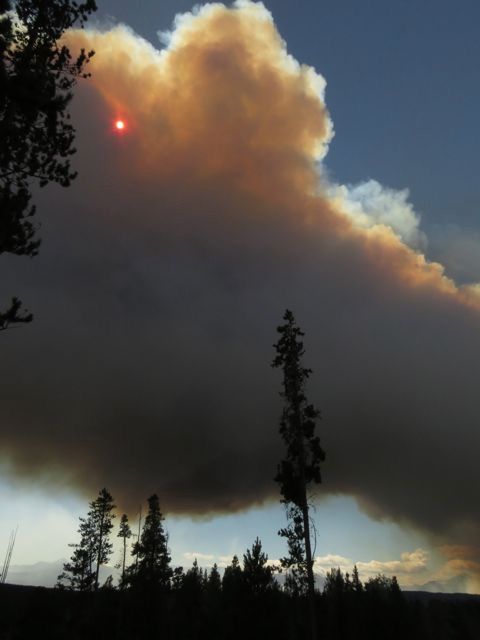
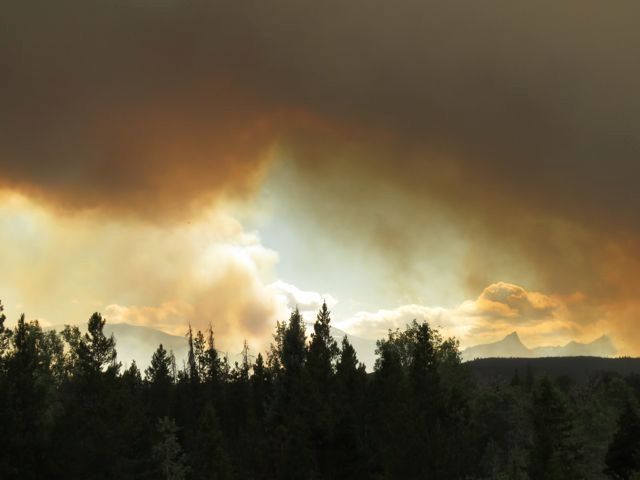 On one occasion I not only had everything packed but also tied the dogs up inside so all I had to do was grab their leads and go. I watched the websites and hoped. (Note that all maps have Kleena Kleene in the wrong place. It is actually about half way between the two lakes.). The Google Earth colouring is a little different. Yellow is older than 6 days, but not necessarily out. Orange is the last 12 – 24 hours, and red the last 12 hours. My place is about 2 and half kilometres from the nearest fire at this point.
On one occasion I not only had everything packed but also tied the dogs up inside so all I had to do was grab their leads and go. I watched the websites and hoped. (Note that all maps have Kleena Kleene in the wrong place. It is actually about half way between the two lakes.). The Google Earth colouring is a little different. Yellow is older than 6 days, but not necessarily out. Orange is the last 12 – 24 hours, and red the last 12 hours. My place is about 2 and half kilometres from the nearest fire at this point.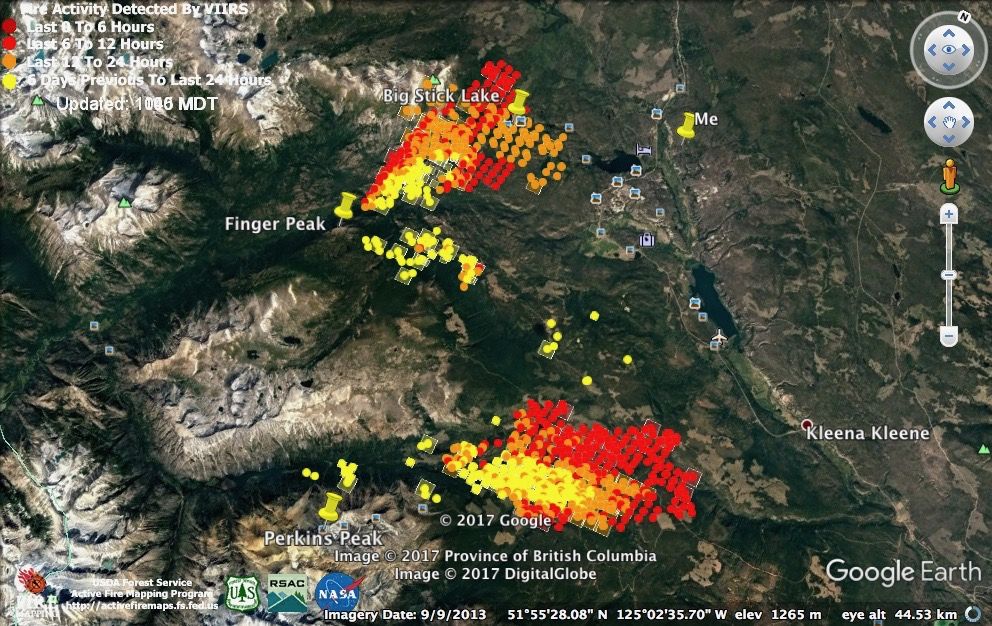 Scarey stuff indeed. But if I left I would not have been allowed home and I would have lost my garden. Worse, I would have been driven mad in some evacuation post. Even if I had driven on the highway within the barriers without a permit I would have been arrested.
Scarey stuff indeed. But if I left I would not have been allowed home and I would have lost my garden. Worse, I would have been driven mad in some evacuation post. Even if I had driven on the highway within the barriers without a permit I would have been arrested.
And yet, permits were given to all sorts of people – even, at the end, to tourist fishermen going down to Bella Coola. The whole thing became an absolute farce. I emailed radio stations about the situation and was given three different phone interviews. One local shut-in resident referred to the situation as house arrest. I was at least able to hike onto the hills around my place and see what was going on (when the smoke allowed). (I wasn’t supposed to of course – but no one would know..…)
Well eventually the days got shorter and the nights damper and the fires, although still extensive, were more controllable. We were first allowed to go to town at the beginning of September – what terrible areas of destruction we could see further east. I have often been unable to go to a store for 2 months or more, but in this instance I had not planned for it and was beginning to get low on a few items. (Don’t forget, I couldn’t go to the local store, either.). Because I prefer to eat organic or specialized food (emmer instead of wheat, for instance) I get a lot of items sent by mail. But because of the Evacuation Order, mail deliveries were halted. (I would not have been able to drive to the post office anyway.) At least I had the garden!
It was the biggest fire season BC has ever had. Wild horses were burned, cattle were unaccounted for – or had to be destroyed because their feet were burned. As were animals such as moose. Many people lost their homes and livelihoods (all tourist businesses, for instance, were shut down: mind you, loggers earned tremendous money as firefighters; local resorts were stuffed with those who did not want to live in the camps. But that was only in the fire areas.) No one lost any structures in any of the western fires. I was out a bit of gas money and a great deal of time – but I could very well get a book out of the experience!
Even though we have now had fall rains and wet snow, there is still a miasma of smoke over the burned areas under certain inversion conditions. A serious fire further north a couple of years ago did not finally go out for 18 months. We all hope for a heavy snow winter to help alleviate the situation for next summer – so far it doesn’t look all that promising. If you want a blow-by-blow account of the whole adventure, start with the blog post FIRE! About 10 posts in all – and lots of pics!
As for the rest of the year – there were two other very exciting events, fortunately both were much happier. In June I headed to the Yukon for 3 weeks. I had never been and always wanted to go. I timed my trip for the rock/alpine flowers and was certainly not disappointed. I saw some absolute gems. 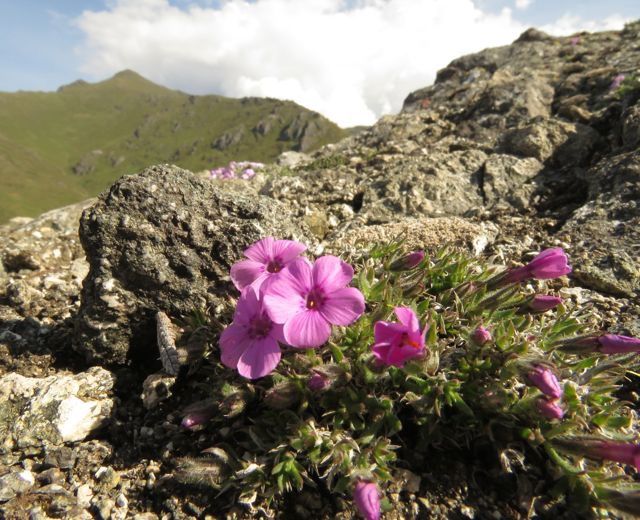 I had rigged my van up for camping – and was plagued by rain, deluges, and snow! The Chilcotin had been green and wet when I left. In the three weeks I was away, despite the weather up north, it had turned crispy brown. No one could believe how fast it had dried up – much earlier than usual. A week after I came home, the wild fires erupted.
I had rigged my van up for camping – and was plagued by rain, deluges, and snow! The Chilcotin had been green and wet when I left. In the three weeks I was away, despite the weather up north, it had turned crispy brown. No one could believe how fast it had dried up – much earlier than usual. A week after I came home, the wild fires erupted.
A month after the Evacuation Order was lifted I started on a book tour for my 12th book: Harry: A Wilderness Dog Saga. I – or rather Harry – has been working on it for 3 years. Harry and his sidekick Badger tell the stories of all the dogs in our pack since Lonesome – a span of about 35 years. Lonesome: Memoirs of a Wilderness Dog was by far and away my best seller and so I had a pretty good following for Harry. I took the dogs along – they were after all the stars of the show. Harry absolutely loved it!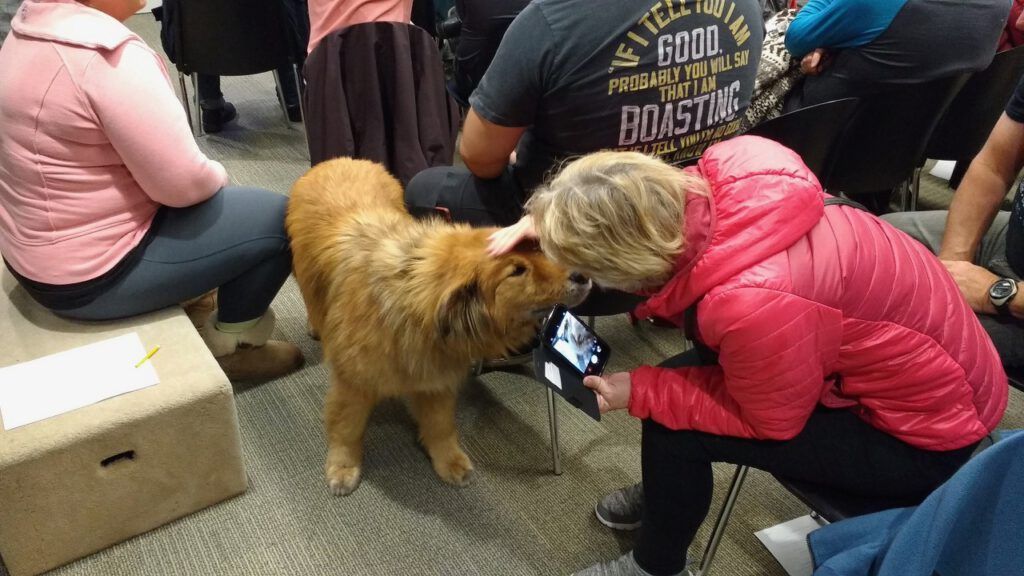 He smooged around all the slide show attendees, and we also spoke in bookstores.
He smooged around all the slide show attendees, and we also spoke in bookstores.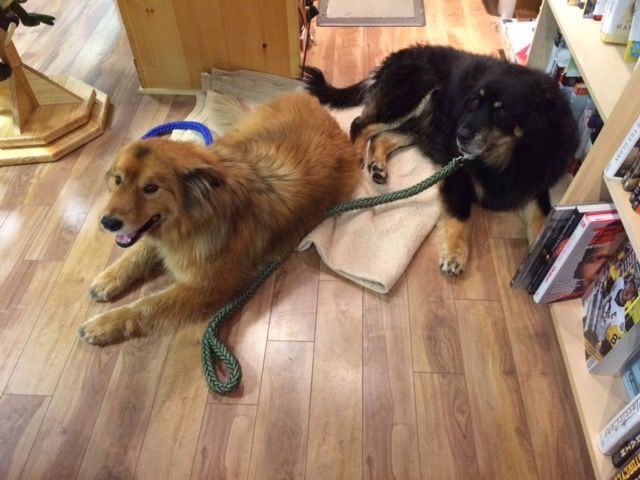 We were on the road for 5 weeks in the lower mainland, Vancouver Island, and the Okanagan, and thanks to a wonderful publicity person at Harbour Publishing, the tour was a great success and the book is selling very well.
We were on the road for 5 weeks in the lower mainland, Vancouver Island, and the Okanagan, and thanks to a wonderful publicity person at Harbour Publishing, the tour was a great success and the book is selling very well.
END OF YEAR, 2016
2016 was,
In a word:
WET!
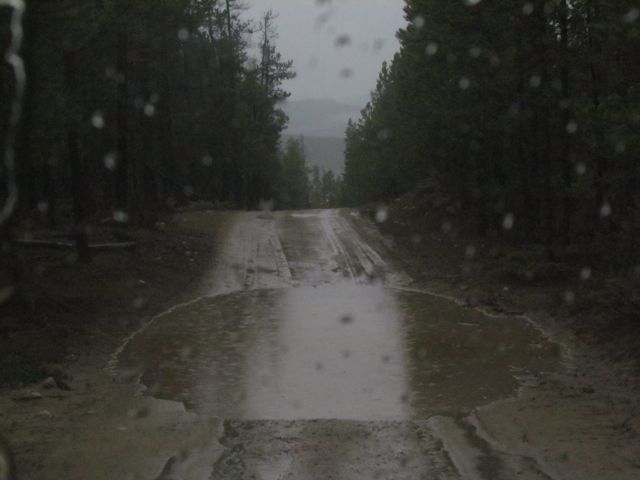 We’ve never had such a dreary, wet year. Dreary started early January although there was very little precipitation then, and late March it was dry and hot. In April we were already concerned about forest fires, and in the north of the province terrible ones consumed whole towns. But in the middle of that month, it rained. The newly-planted seeds (too early, really) simply sat there. It remained cold and wet all summer right through to November – indeed this month of December has seen more sun than almost the whole of the year put together.
We’ve never had such a dreary, wet year. Dreary started early January although there was very little precipitation then, and late March it was dry and hot. In April we were already concerned about forest fires, and in the north of the province terrible ones consumed whole towns. But in the middle of that month, it rained. The newly-planted seeds (too early, really) simply sat there. It remained cold and wet all summer right through to November – indeed this month of December has seen more sun than almost the whole of the year put together.
There were occasionally sunny days; sometimes we had three of them in a row – and it was during these bouts of sunshine that I snatched days in the mountains. My new alpine playground is Perkins Peak. The summit is visible from my yard.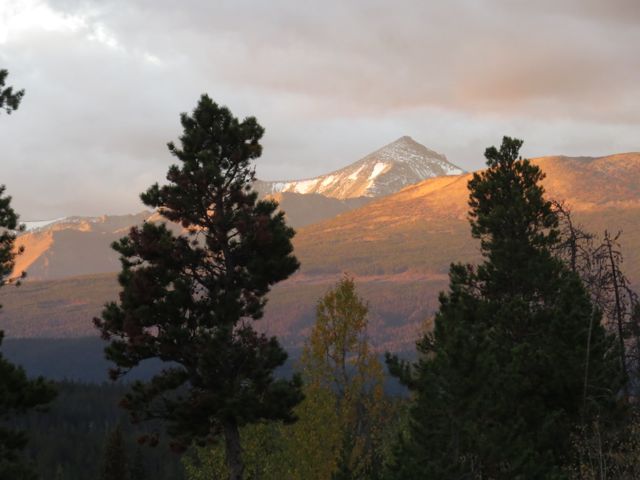 I had known that people drive and ATV up to not far below the 9,000+-ft summit, but had never figured out the way to negotiate the maze of logging roads. However, with instructions from a friend I finally co-erced my pickup up a very bouldery road right to the tree line, which is at an altitude of around 7,000 ft, way higher than Nuk Tessli. The roads were installed up there to service a couple of gold mines (now defunct). On my first trip, in late June, the flowers were the best.
I had known that people drive and ATV up to not far below the 9,000+-ft summit, but had never figured out the way to negotiate the maze of logging roads. However, with instructions from a friend I finally co-erced my pickup up a very bouldery road right to the tree line, which is at an altitude of around 7,000 ft, way higher than Nuk Tessli. The roads were installed up there to service a couple of gold mines (now defunct). On my first trip, in late June, the flowers were the best.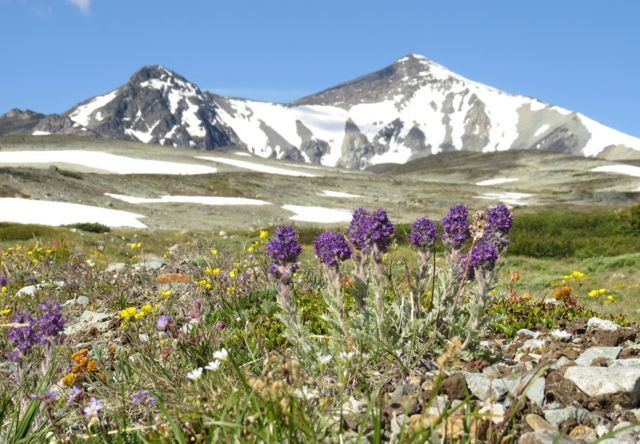 Higher up, there was still a lot of snow about.
Higher up, there was still a lot of snow about.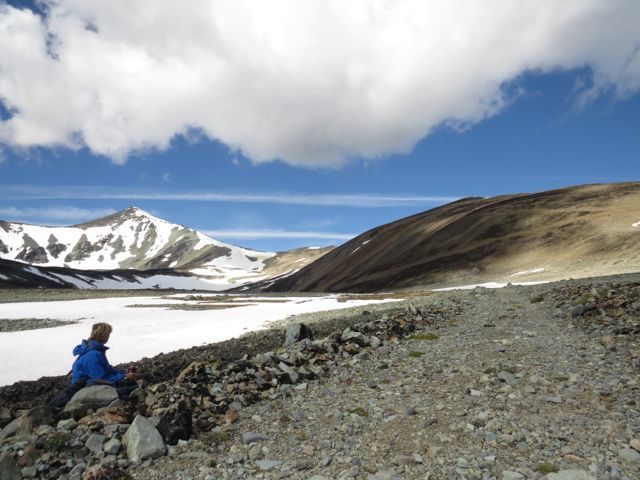 The second trip, I tried for the summit, but my knees would not take the boulders up the last stretch. (I got to the top of the snow patch on the right. My volunteer hiked to the summit alone.)
The second trip, I tried for the summit, but my knees would not take the boulders up the last stretch. (I got to the top of the snow patch on the right. My volunteer hiked to the summit alone.)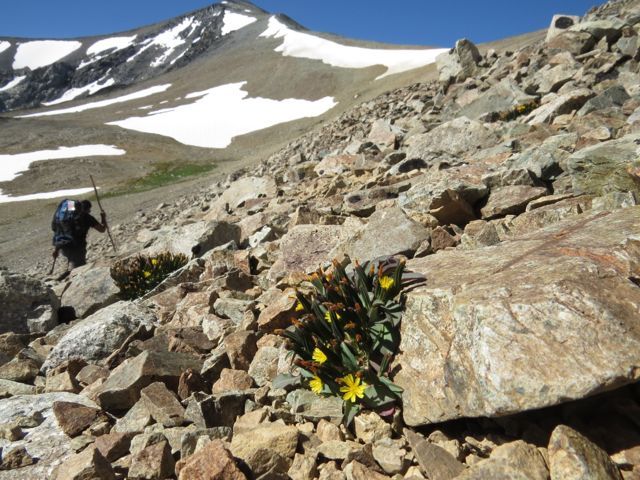 The views were nonetheless spectacular. Looking north and west I could see many mountains that were familiar with me; those near Lonesome Lake, Nuk Tessli, and my current home. More than half my life was spread before me.
The views were nonetheless spectacular. Looking north and west I could see many mountains that were familiar with me; those near Lonesome Lake, Nuk Tessli, and my current home. More than half my life was spread before me. 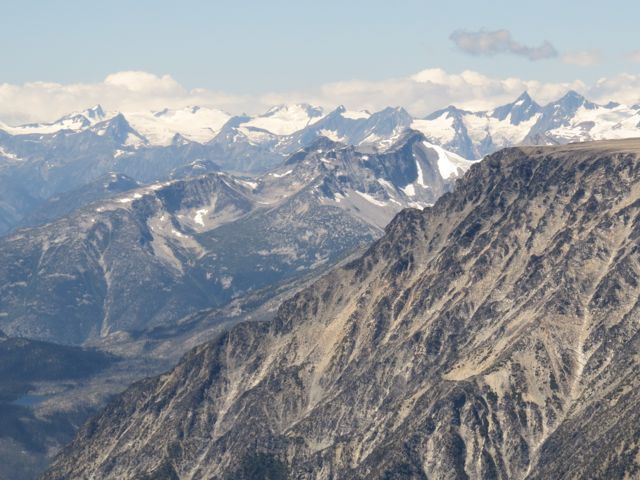 On the third trip, I left the current wwoofers to make their own way to the top and I visited the second, lower mine. It was a blasted landscape with very little growth, but it had it’s own stark beauty.
On the third trip, I left the current wwoofers to make their own way to the top and I visited the second, lower mine. It was a blasted landscape with very little growth, but it had it’s own stark beauty.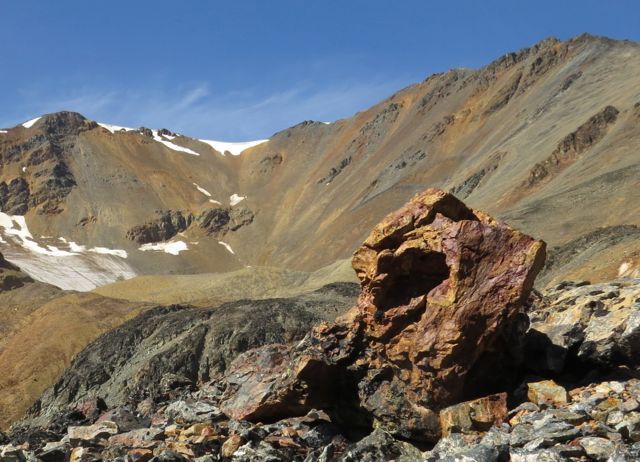 As always, I sought the tiny scraps of flowering vegetation, but they were nowhere near as spectacular as the Nuk Tessli flower meadows.
As always, I sought the tiny scraps of flowering vegetation, but they were nowhere near as spectacular as the Nuk Tessli flower meadows.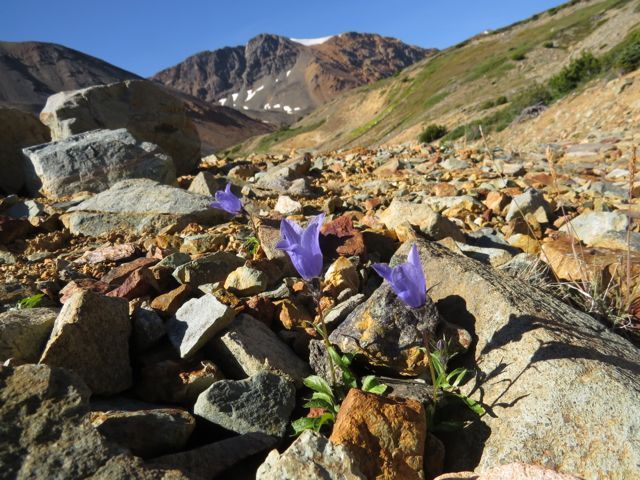 As for the rest of the summer, we worked in the rain.
As for the rest of the summer, we worked in the rain.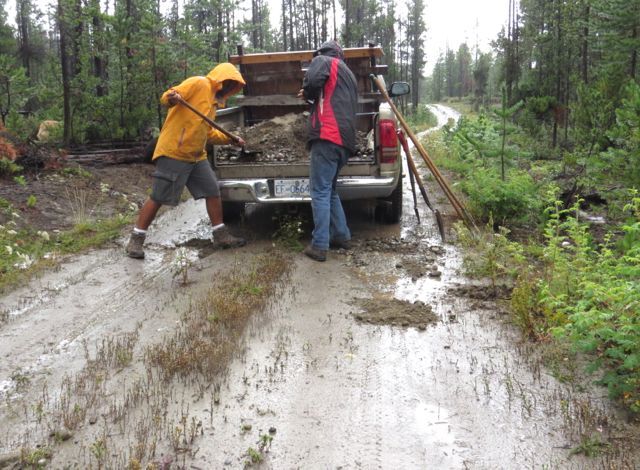 It deluged at the Anahim Lake Stampede. The arena was flooded.
It deluged at the Anahim Lake Stampede. The arena was flooded.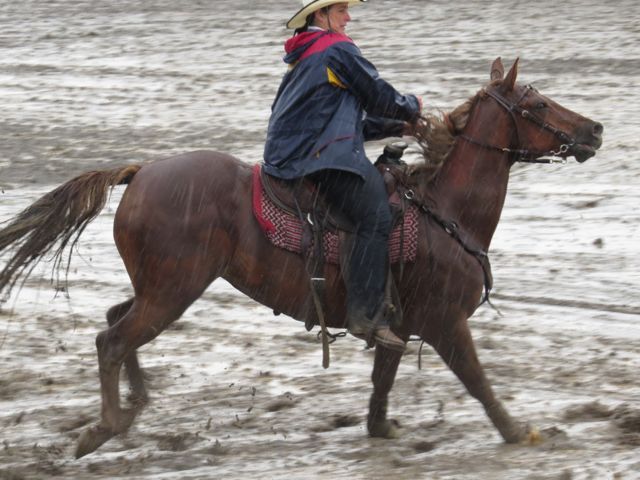
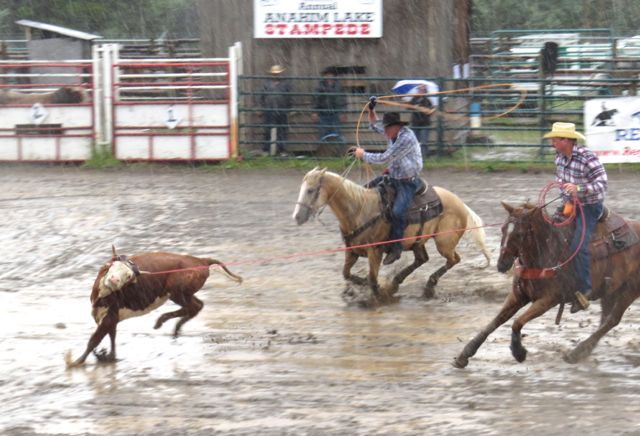 The garden did well, though.
The garden did well, though.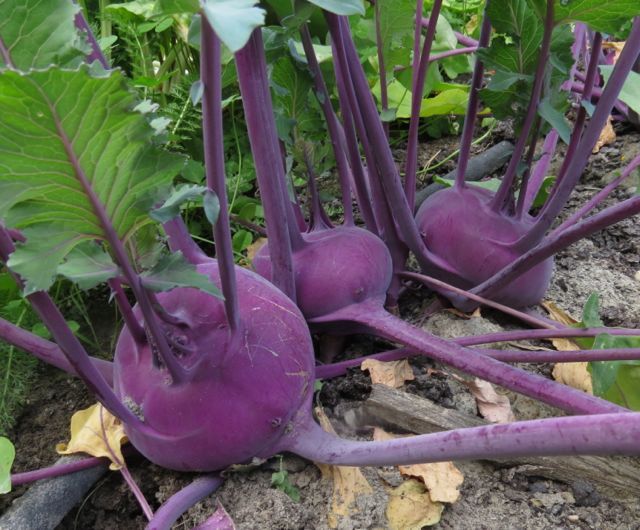 And we had some spectacular rainbows!
And we had some spectacular rainbows!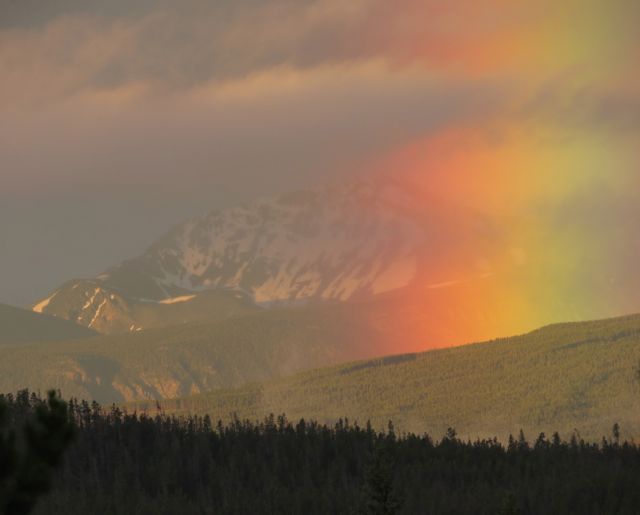 Last year I signed an agreement to sell the lower property to Jade and Ryan. I did not receive the bulk of the money until this year. First thing I bought was – a washing machine!
Last year I signed an agreement to sell the lower property to Jade and Ryan. I did not receive the bulk of the money until this year. First thing I bought was – a washing machine!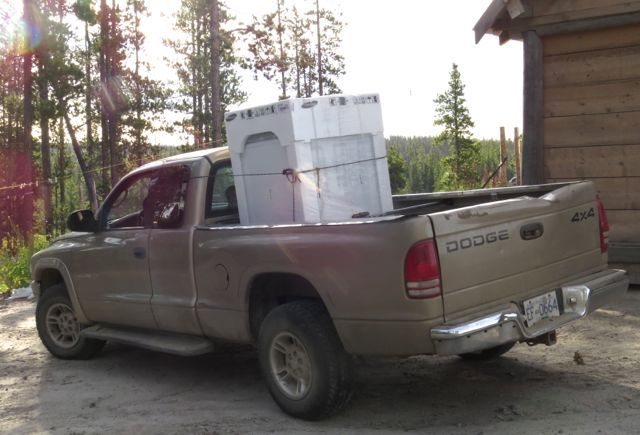 It is installed in my new bathroom. A friend came and helped with the plumbing and tiling, and I had a couple of excellent volunteers to do the carpentry work. There is still no running hot water, only cold, and I don’t have a flush toilet, but it has a sink and a drain and a tiled area where you stand and throw water over yourself for a shower. (Water heated on the stove.)
It is installed in my new bathroom. A friend came and helped with the plumbing and tiling, and I had a couple of excellent volunteers to do the carpentry work. There is still no running hot water, only cold, and I don’t have a flush toilet, but it has a sink and a drain and a tiled area where you stand and throw water over yourself for a shower. (Water heated on the stove.)
But the real spending happened when the main part of the money came through in December.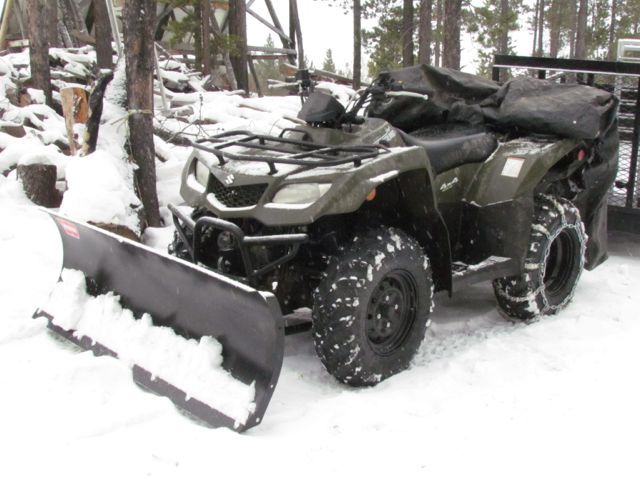 On my second trip to Perkins Peak, we met a couple of ATVers, who saved me a footsore hours’ walk on the stoney road back to my truck. If I had been able to drive to the end of the road I might have been able to reach the summit.
On my second trip to Perkins Peak, we met a couple of ATVers, who saved me a footsore hours’ walk on the stoney road back to my truck. If I had been able to drive to the end of the road I might have been able to reach the summit.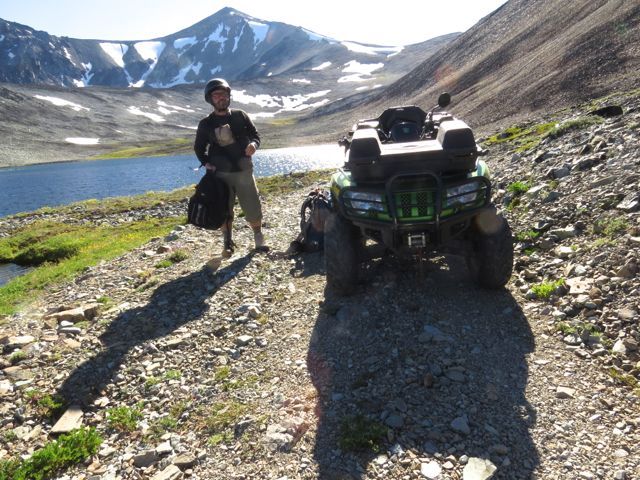 I decided an ATV was now the way to go. There are a lot of logging roads that my knees would take days to walk, but using the ATV I can get to some spectacular places to hike and also carry camping gear. It will give me a whole new lease of mountain life.
I decided an ATV was now the way to go. There are a lot of logging roads that my knees would take days to walk, but using the ATV I can get to some spectacular places to hike and also carry camping gear. It will give me a whole new lease of mountain life.
You will see also that my ATV has a plough. For years I’ve had difficulty in organizing the ploughing of my road, and I will still have to hire someone with a big machine if we get a heavy dump, but now I have ploughing independence.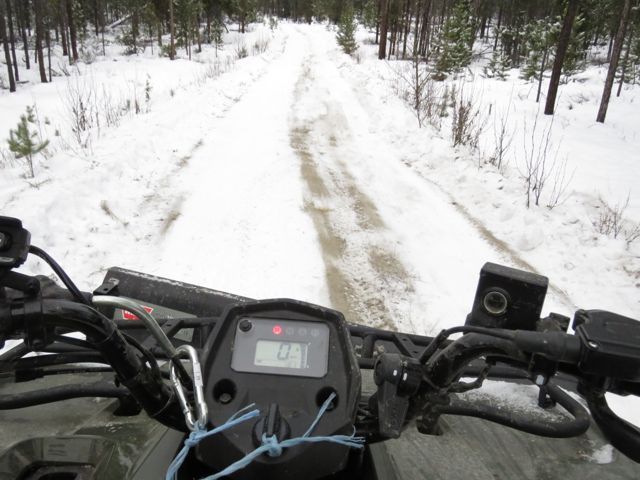 Other news: Likely you will remember the best seller: Lonesome – Memoirs of a Wilderness Dog. If you liked that book, you will be pleased to hear that a current dog, Harry, plus his sidekick, Badger, have now written: Harry – A Wilderness Dog Saga. It is the story of all the dogs since Lonesome. A contract has been signed and Harry has been contacted by an editor – this work will start in the new year and the book will be published September 2017.
Other news: Likely you will remember the best seller: Lonesome – Memoirs of a Wilderness Dog. If you liked that book, you will be pleased to hear that a current dog, Harry, plus his sidekick, Badger, have now written: Harry – A Wilderness Dog Saga. It is the story of all the dogs since Lonesome. A contract has been signed and Harry has been contacted by an editor – this work will start in the new year and the book will be published September 2017.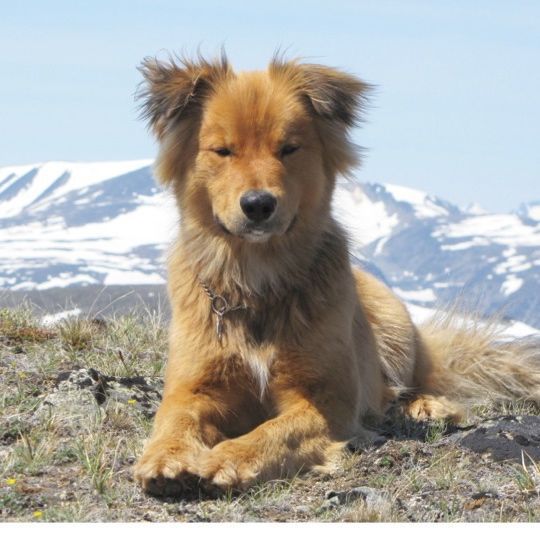 I did not go to Nuk Tessli this year – no one booked and I got too busy anyway – but we have set up the dates for next year: July 14 – 18th. If you are interested in coming and want to have a preview of what to expect, check out the Nuk Tessli page on my blog.
I did not go to Nuk Tessli this year – no one booked and I got too busy anyway – but we have set up the dates for next year: July 14 – 18th. If you are interested in coming and want to have a preview of what to expect, check out the Nuk Tessli page on my blog.
All that remains now is to wish you the best health and happiness in the coming year. May your summers be warm and sunny,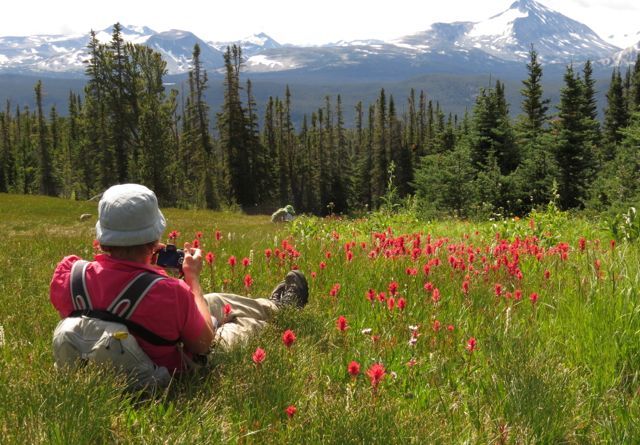 And your winters cold and dry.
And your winters cold and dry.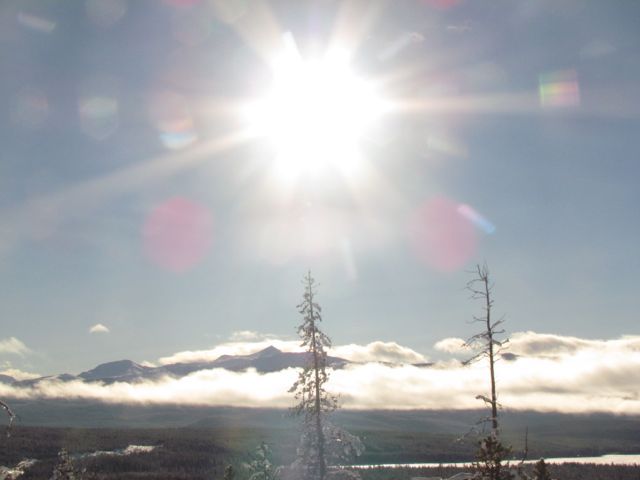
Chris.
SOLSTICE 2015

The news that shaped the whole season was the sale of the lower property, the one by the river where I lived when I first came to Ginty Creek in 2006. In the middle of February of 2015, when the snow was rotting due to the abnormal warm weather, a young couple with two small children stayed for a day or two, slung their kids onto their backs, and wallowed through the knee-deep sloppy snow, tramping around the property and making plans. The idea of neighbours living so close (half a kilometre away) was not a particularly happy one for me, but my house and my life were stalled through lack of money. I am also getting older – 68 this year – and, whereas I am perfectly healthy right now, I have some physical limitations, and running my house is still quite labour intensive (wood heating and cooking; no running hot water; no washing machine or shower; having to brush snow off the solar panels etc) and I want to be able to stay here until I am at least 99. Having reliable people close by might make a big difference. And, if I have to have neighbours, I don’t think I could choose better. Jade and Ryan, Herb and Wren, will not move in full time until the spring of 2016.
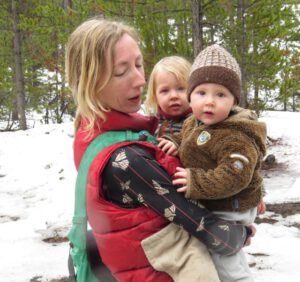 The cabin beside the river being no longer available to me for volunteers and other guests, meant that I needed other accommodation. Jade and Ryan are good carpenters (before she had babies, Jade made fine furniture for a living) and part of the payment that we agreed upon was for them to provide and erect a yurt.
The cabin beside the river being no longer available to me for volunteers and other guests, meant that I needed other accommodation. Jade and Ryan are good carpenters (before she had babies, Jade made fine furniture for a living) and part of the payment that we agreed upon was for them to provide and erect a yurt. 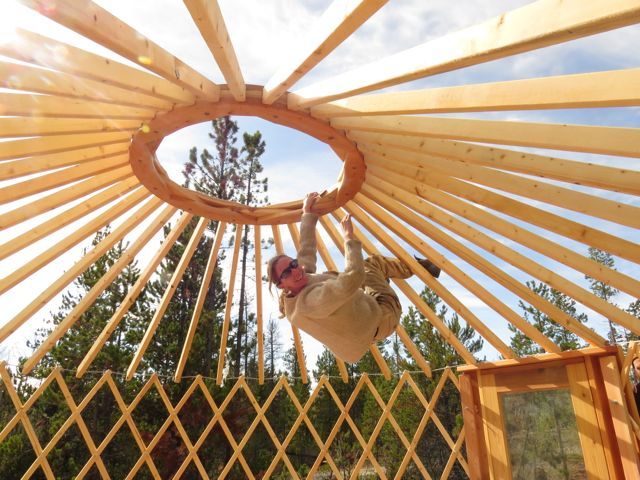
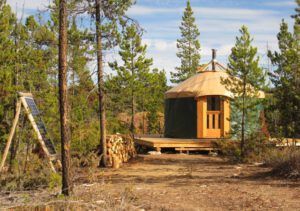 I had to make the deck: now that I had a bit of money, I could spend it on such projects, and I had a whole slew of volunteers helping me to finish them. Only one batch of three were duds, the rest were pretty good and some were quite talented. It did mean, however, that I was working very hard myself and also providing meals for all these hungry young people. But we got a lot done. We renewed the deck in front of my house. making it wider and higher…
I had to make the deck: now that I had a bit of money, I could spend it on such projects, and I had a whole slew of volunteers helping me to finish them. Only one batch of three were duds, the rest were pretty good and some were quite talented. It did mean, however, that I was working very hard myself and also providing meals for all these hungry young people. But we got a lot done. We renewed the deck in front of my house. making it wider and higher…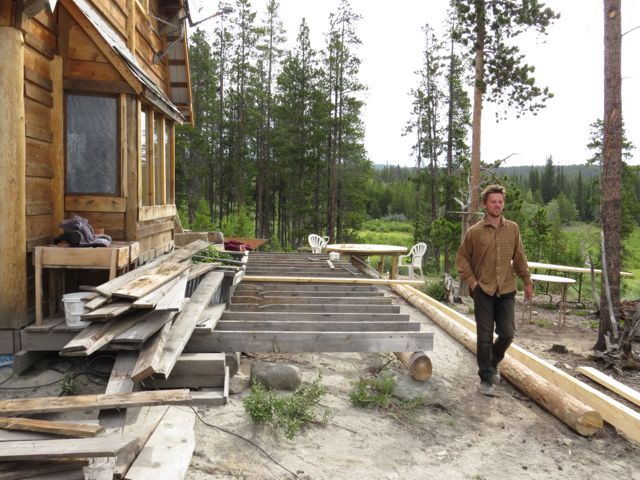
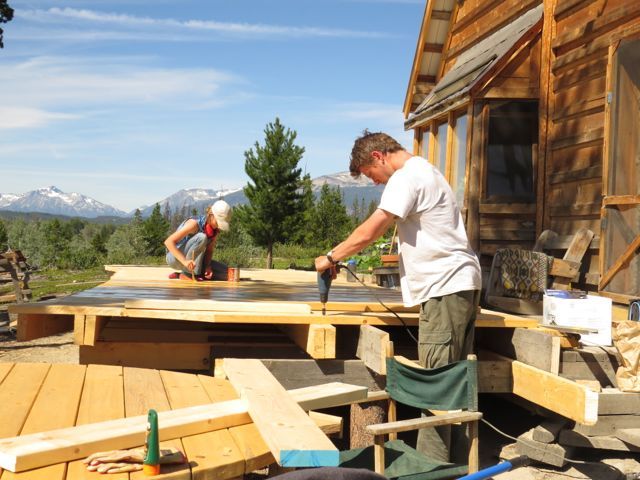 …and I eventually built on it a greenhouse in front of the door.
…and I eventually built on it a greenhouse in front of the door.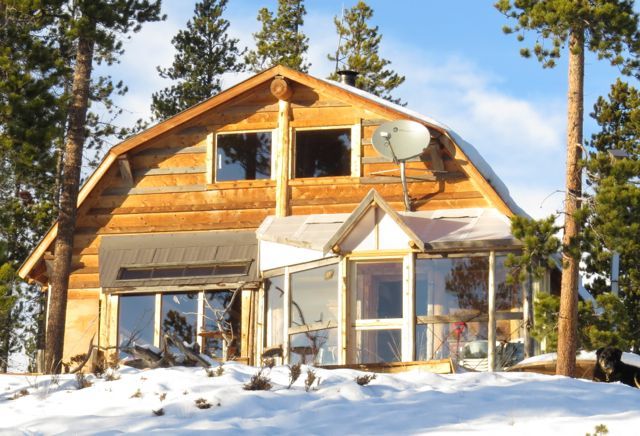
It still gets too cold at night to use it for anything but drying clothes at the moment, but it keeps the snow and winter winds away from the main door and makes a hot place to sit when the sun is shining, even if it is in the -20Cs outside.
Another project that volunteers helped with was my first serious attempt at a garden. 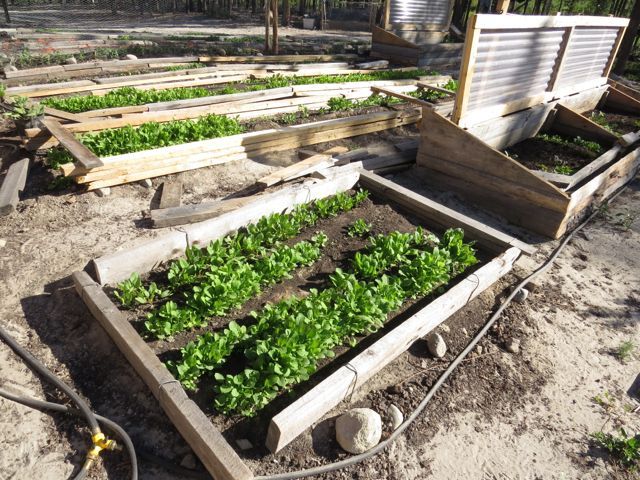 Most of the time I have lived at Ginty Creek I spent the summers at Nuk Tessli: the first summer here I was recovering from a knee replacement so couldn’t do much. (It, by the way, was pretty much a waste of time. I am just as lame as I was before the operation; can no longer kneel or get in and out of a canoe etc.) I made a great many mistakes, but the garden, as far as I was concerned, was a success. The big problems was getting enough water to it. Despite a reasonable snow cover last winter, when it melted, the ground underneath was so dry that the runoff disappeared in an instance. Temperatures in June and early July reached into the mid 30Cs day after day. My well has only a limited amount of water so I had to ration it carefully. At first I tried to irrigate an area that blows dust, and grow clover in there, but my water ran out so I had to concentrate on the edible garden. Only hardy stuff can grow here outside – even with +30C temps, it often froze at night – but I could scrounge greens, even if they were brittle with frost, right until the end of October.
Most of the time I have lived at Ginty Creek I spent the summers at Nuk Tessli: the first summer here I was recovering from a knee replacement so couldn’t do much. (It, by the way, was pretty much a waste of time. I am just as lame as I was before the operation; can no longer kneel or get in and out of a canoe etc.) I made a great many mistakes, but the garden, as far as I was concerned, was a success. The big problems was getting enough water to it. Despite a reasonable snow cover last winter, when it melted, the ground underneath was so dry that the runoff disappeared in an instance. Temperatures in June and early July reached into the mid 30Cs day after day. My well has only a limited amount of water so I had to ration it carefully. At first I tried to irrigate an area that blows dust, and grow clover in there, but my water ran out so I had to concentrate on the edible garden. Only hardy stuff can grow here outside – even with +30C temps, it often froze at night – but I could scrounge greens, even if they were brittle with frost, right until the end of October.
I made several trips down The Hill to Bella Coola, including a memorable very wet boat ride to see the bears,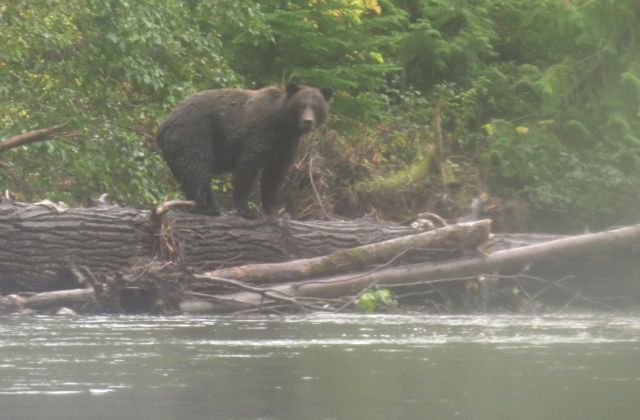 and guided for 10 days at Nuk Tessli. (We have, by the way, fixed 2016’s dates. 20-24th July for the first tour, a second 5-day tour following immediately afterwards if there are enough bookings.)
and guided for 10 days at Nuk Tessli. (We have, by the way, fixed 2016’s dates. 20-24th July for the first tour, a second 5-day tour following immediately afterwards if there are enough bookings.)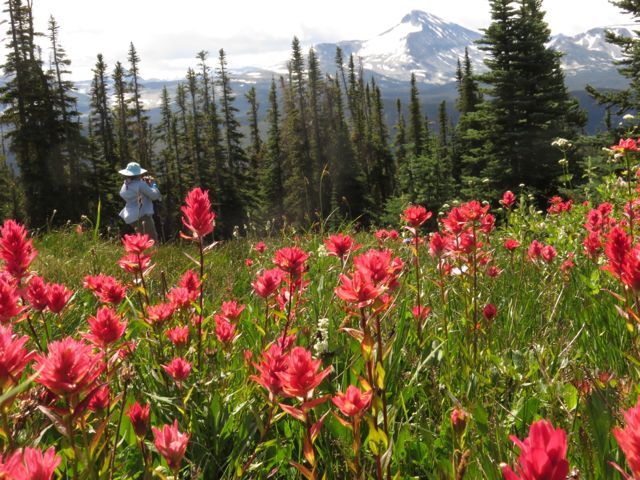 A completely different experience was to witness a First Nations ceremony at Chilco Lake to name a friend’s 12-person canoe. I even managed to get a short and very exhilarating paddle in it. Not sure if the dogs appreciated the honour!
A completely different experience was to witness a First Nations ceremony at Chilco Lake to name a friend’s 12-person canoe. I even managed to get a short and very exhilarating paddle in it. Not sure if the dogs appreciated the honour!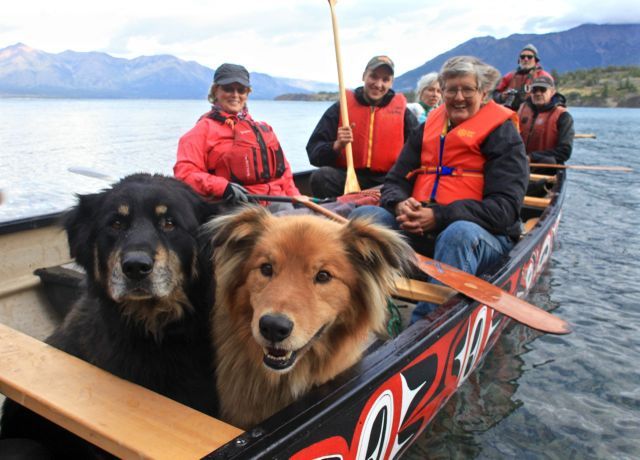 I also hiked up to flower meadows on Potato Mountain, which boast quite a diffferent mix from those at Nuk Tessli.
I also hiked up to flower meadows on Potato Mountain, which boast quite a diffferent mix from those at Nuk Tessli.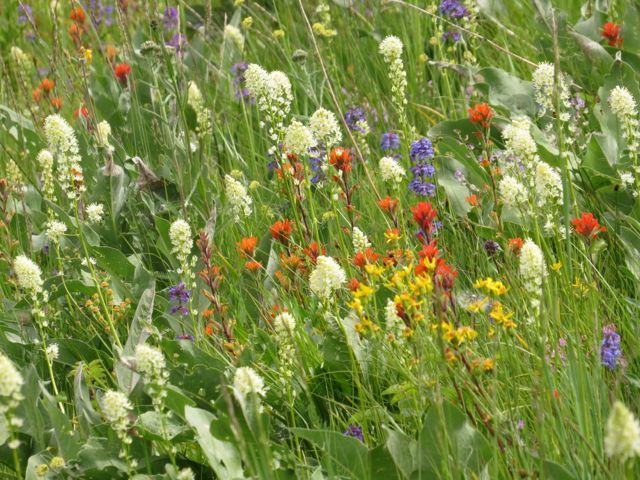 There were the usual year’s events: the cattle drive party at the Precipice….
There were the usual year’s events: the cattle drive party at the Precipice….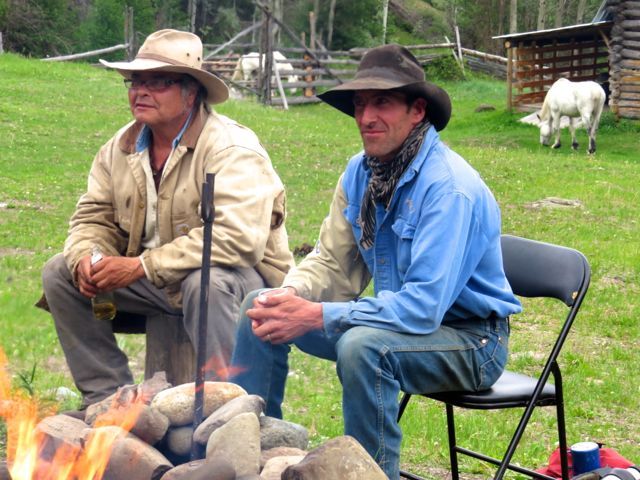 …the Tatla Lake Gymkhana
…the Tatla Lake Gymkhana 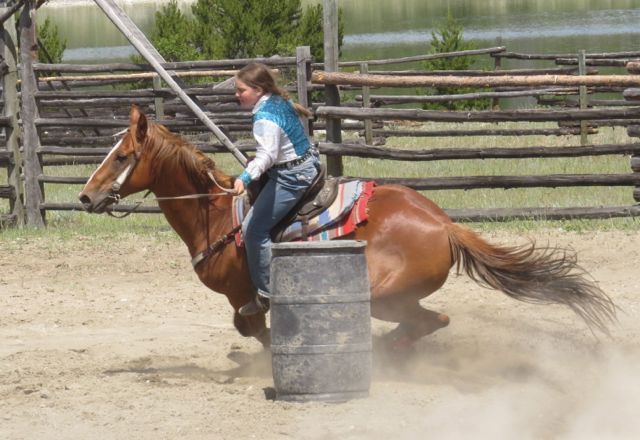 …and the Anahim Lake Rodeo.
…and the Anahim Lake Rodeo.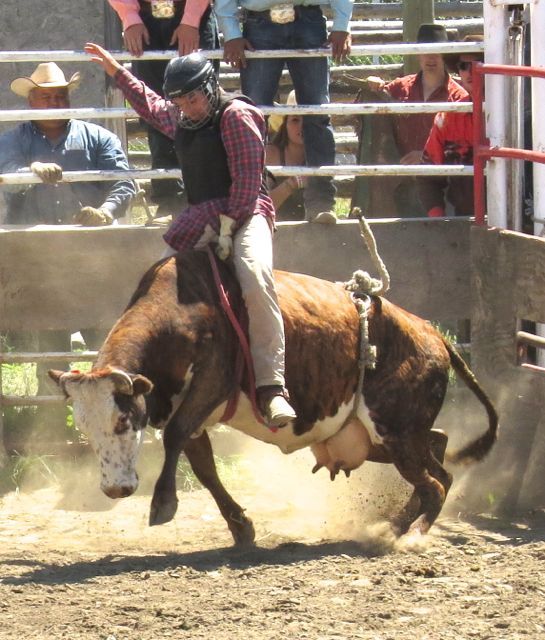 Next year, with money worries out of the way and fewer building projects to pursue (although there is still plenty to do), I should finally have more time to enjoy the area more thoroughly. All these events are of course detailed in the blog.
Next year, with money worries out of the way and fewer building projects to pursue (although there is still plenty to do), I should finally have more time to enjoy the area more thoroughly. All these events are of course detailed in the blog.
As for books – Harry was supposed to be putting together his memoirs as a sequel to Lonesome last winter, but he got kinda lazy and only part of the first draft is done. Harry will have to seriously buckle down to work this winter, which I promise he will do – right after all the Holiday socializing!
I have, however, put together an ebook of Common Nuk Tessli Wildflowers. 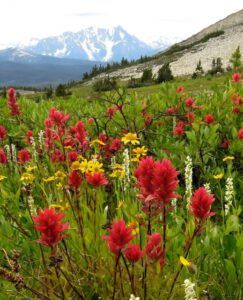 Here is the picture for the cover page. If you want a virtual tour through Nuk Tessli’s alpine ridges and wonderful meadows (90 pages, over 200 photographs), here is your chance – for only $10.95! And you don’t have to swat mosquitos while you are doing it!(If you read this right away, the means for downloading this will not be set up. I will write a post as soon as it is available.)
Here is the picture for the cover page. If you want a virtual tour through Nuk Tessli’s alpine ridges and wonderful meadows (90 pages, over 200 photographs), here is your chance – for only $10.95! And you don’t have to swat mosquitos while you are doing it!(If you read this right away, the means for downloading this will not be set up. I will write a post as soon as it is available.)
Happy 2016.
Chris

Hi Chris hope to see you this summer ,for now we wish you Merry Christmas and best wishes for the new year ,
Happy New Year Chris
I have really enjoyed reading your books, thanks again for sending them. Now sharing them with my sisters. Summer in the Falklands has been very wet so far too, hoping for some sunshine this weekend.
Hello Chris
So nice to read your chatty notes. As usual your pictures are wonderful. I think most of the province experienced a wet summer that interfered with outside work. I am looking forward to Harry’s book. I know the Seniors at Carefree Manor will enjoy the story as well.
All the very best for 2017, Noreen
Happy Winter Solstice Chris…
What a wonderful chatty newsletter and awesome pictures…
Really glad things are coming together as you want them. (Sorry the knee did not work out! ) even on the balance sheet there are always gains and loses… But everything looks positive…Can hardly wait for Harry’s book….!!!
Take care
Jan Ivy
Happy Winter Solstice! I’m looking forward to your e-book — your beautiful photography and knowledge of wildflowers are uplifting. Best wishes for good health and hope I’ll be reading your blog when you are 99 and I’m 102.
Thanks for your lovely pictures and stories. Please continue to share your life with us. Have a warm and happy Christmas.
Happy New Year too!!
I love your stories and pictures. What a truly wonderful life you have carved out in such a beautiful place. I look forward to your next blog post.
Oh, Chris, I loved the photos , what amazing wild flowers, and your stories. And the idea of a green house infront of your dorr, well done. Your house looks great now, Rosemarie